Copper exploration company Solaris Resources (TSX:SLS) recently announced new assay drilling results from its Warinzta project in southeastern Ecuador. These results come from additional holes that actually increased the size of the “drilled defined envelope of mineralization” at the Warinzta Central location.
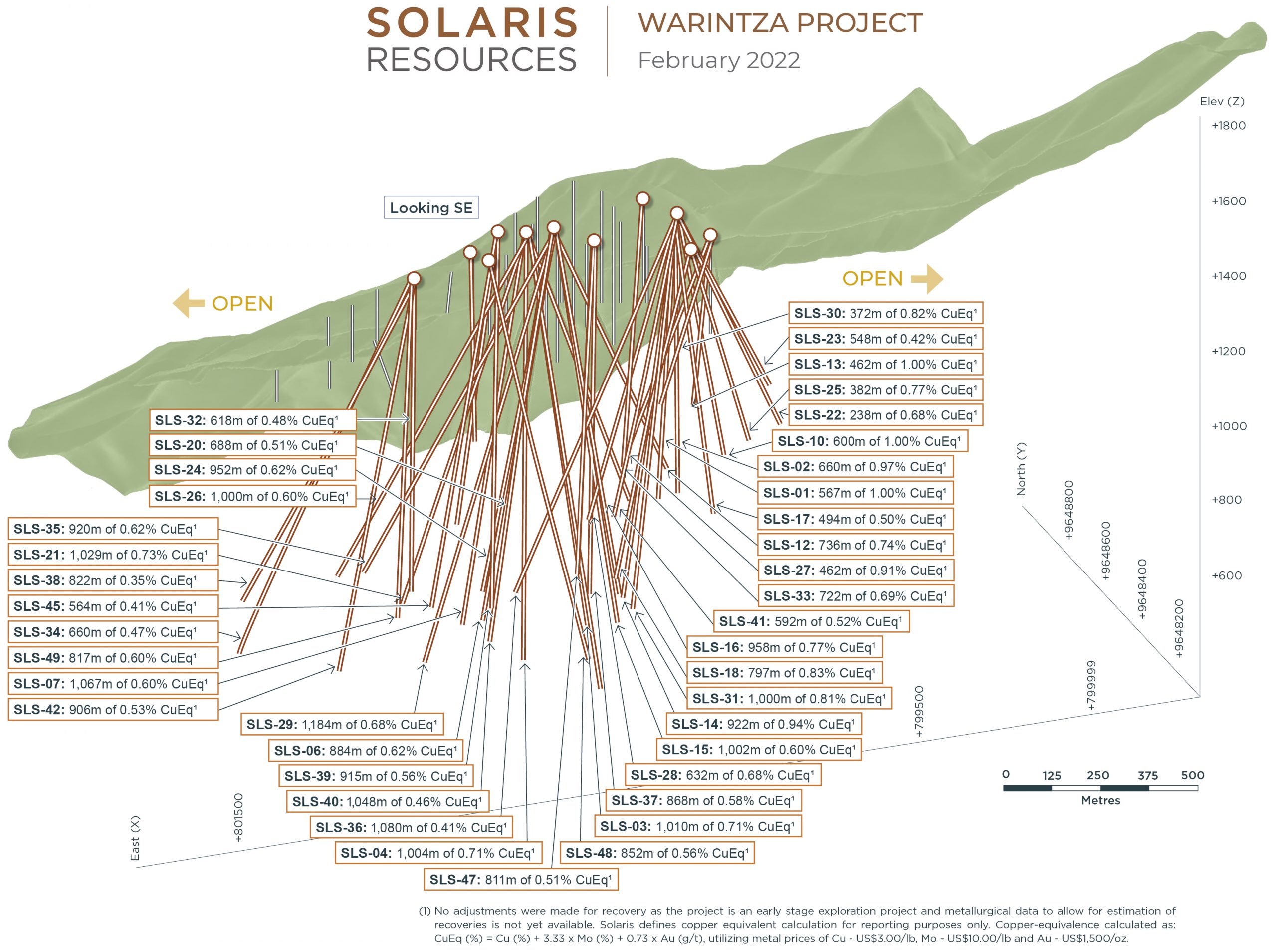
The drilling of these additional holes provided the area with the highest-grade intersection reported by Solaris to date, as well as high-grade extension to the northeast, south and southeast locations at the Warinzta project.
As of today, Solaris has completed drilling 58 holes at Warinzta, and 49 of those holes have assays already reported. Mr. Jorge Fierro, Vice President of Exploration of Solaris explained that the initial resource growth drilling program for Warinzta is finally completed and touched on future drilling plans.
“With this intensive program behind us, the focus of ongoing drilling has turned to pursuing the further extensions of near-surface, high-grade mineralization which remain open, with additional platforms allowing for more aggressive step-outs under construction,” said Fierro in a press release.
Highlights of the drilling from Solaris are as follows:
Drilling Returns Highest Grades Reported to Date in Emerging Northeast Extension that Remains Open:
- SLS-42 was collared at the northeastern limit of the grid and drilled northeast into an entirely open volume, returning 740m of 0.60% CuEq¹ from 52m depth within a broader interval of 906m of 0.53% CuEq¹, extending mineralization in this direction where it remains open
- SLS-49 was drilled southeast from the same platform and returned 396m of 0.70% CuEq¹ within a broader interval of 817m of 0.60% CuEq¹ from 50m depth, tying the northeast extension to the overlap between Warintza Central and East
- SLS-48, was collared in an undrilled area ~200m west of SLS-49 and drilled south, returning 100m of 1.64% CuEq¹ from 50m depth, the highest-grade mineralization reported to date, within a broader interval of 852m of 0.56% CuEq¹, extending the near surface high-grade mineralization to the west in that area
- These results expand Warintza Central by building on an emerging area of near surface, high-grade mineralization; follow-up drilling will pursue further growth by targeting the open areas to the north and northwest, with an additional platform being constructed to pursue further step-outs to the northeast
Drilling Extends Mineralization to Southeast that Remains Open:
- SLS-45 was collared on the eastern side of the grid and drilled southeast into an entirely open volume, returning 236m of 0.56% CuEq¹ from 44m depth within a broader interval of 564m of 0.41% CuEq¹, extending mineralization to the southeast where it remains open
- SLS-46 was collared from a southeastern platform and drilled southeast into a partially open volume, returning 168m of 0.69% CuEq¹ from 48m depth within a broader interval of 632m of 0.31% CuEq¹, extending mineralization in this direction where it remains open
- SLS-47 was collared in the middle of the grid and drilled southeast to infill this area, returning 446m of 0.70% CuEq¹ from 48m depth within a broader interval of 811m of 0.51% CuEq¹, with mineralization remaining open to the south
Figure 2 – Plan View of Warintza Drilling Released to Date
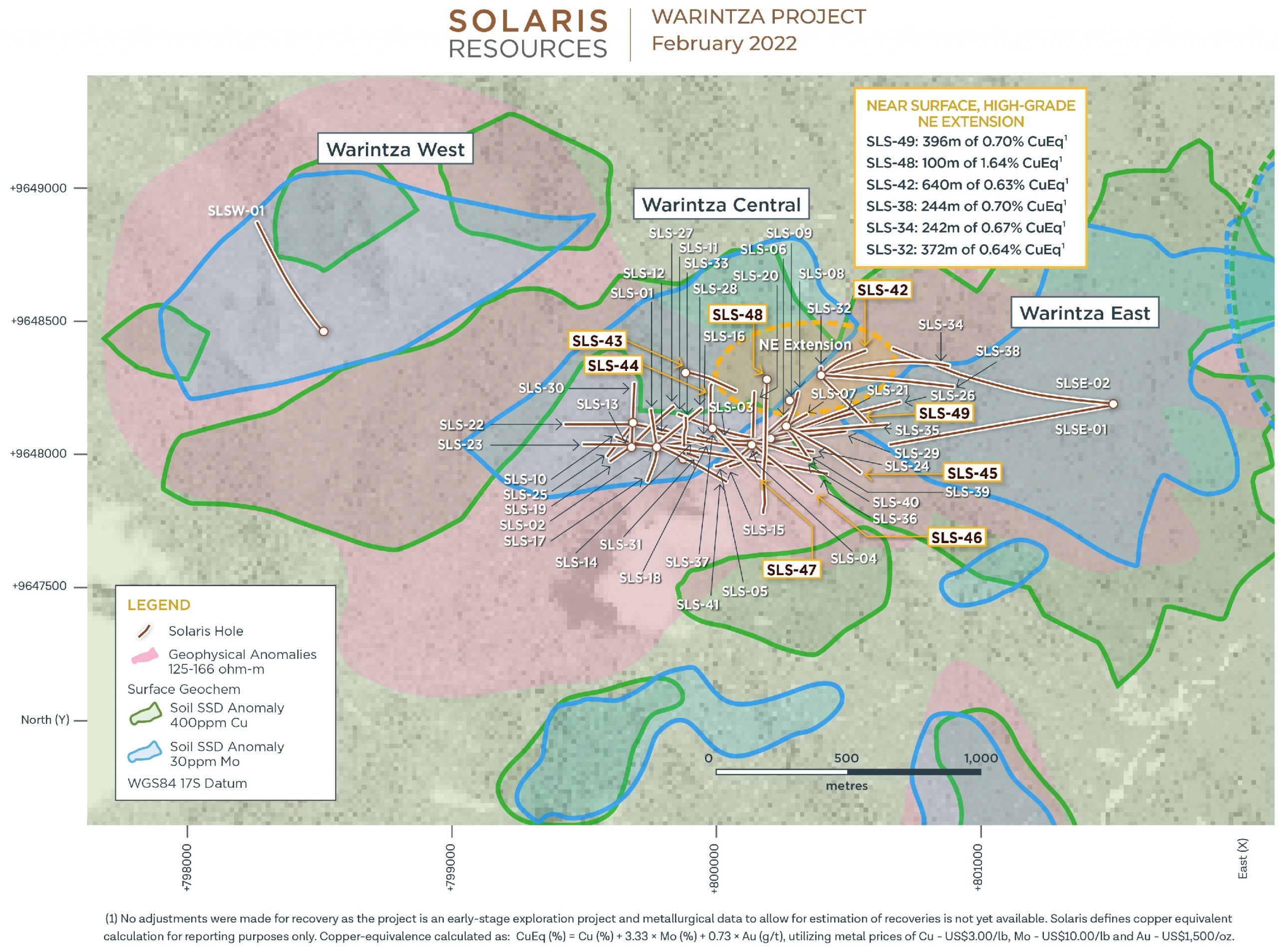
Figure 3 – Long Section of 3D Geophysics Looking Southwest
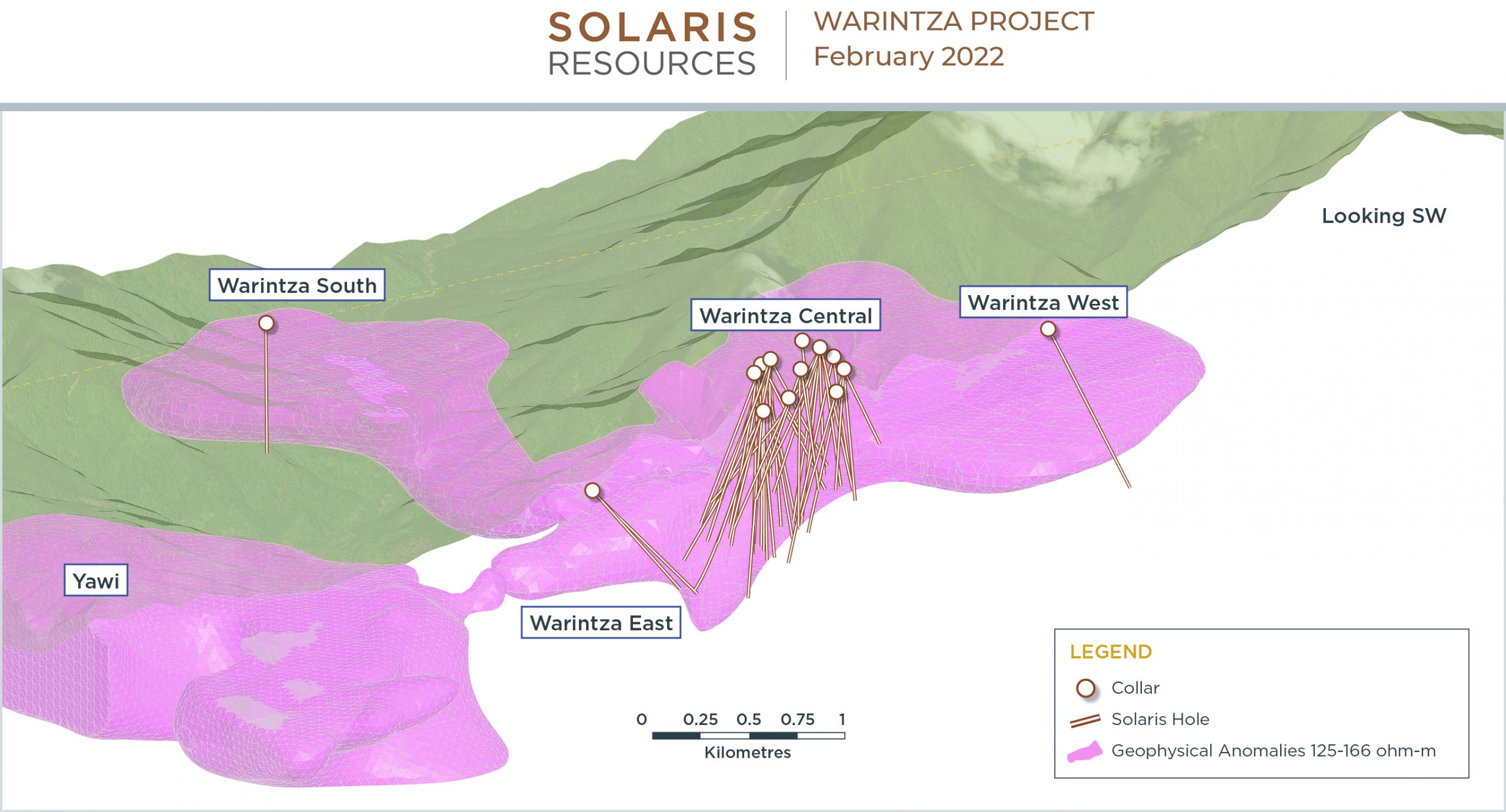
The above references an opinion and is for information purposes only. It is not intended to be investment advice. Seek a licensed professional for investment advice. The author is not an insider or shareholder of any of the companies mentioned above.
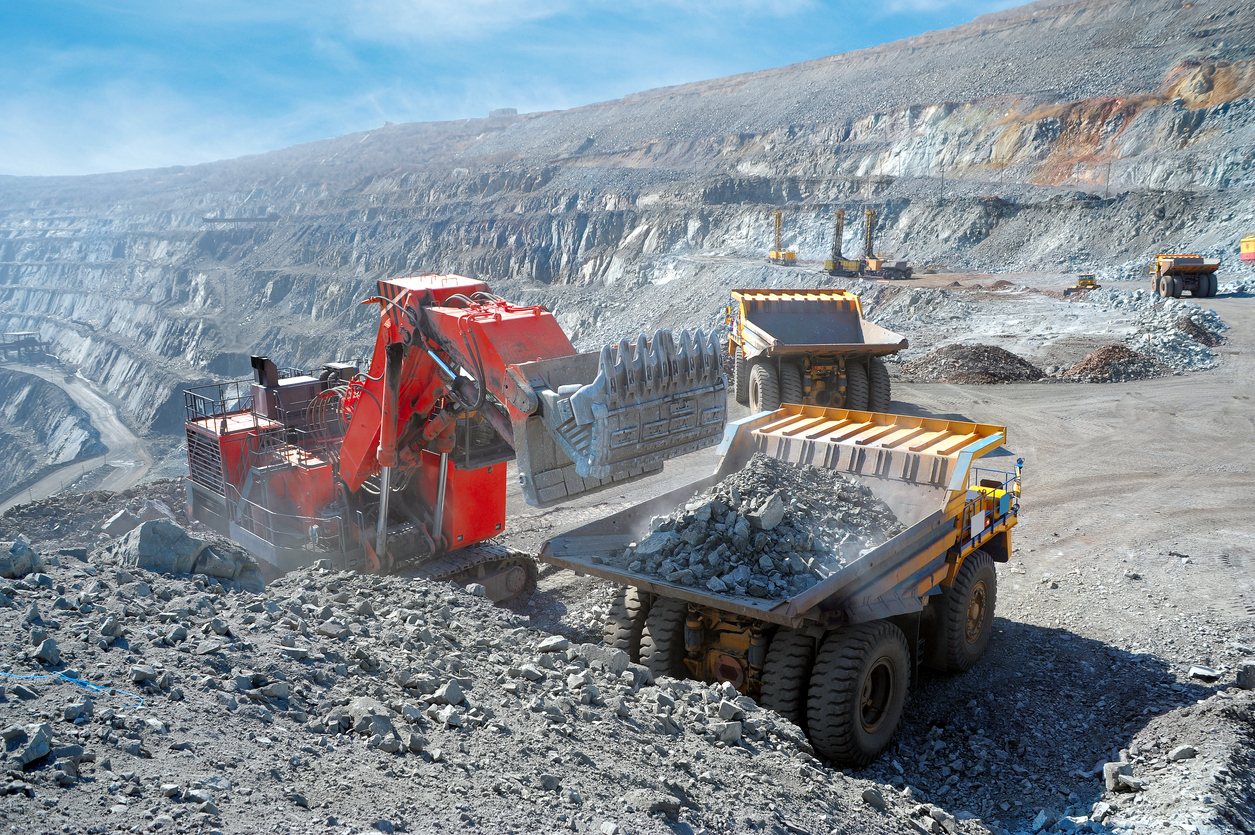
Due to rising iron ore prices and high demand in China, Rio Tinto (ASX:RIO) recently achieved its best annual performance and boosted its an annual dividend to $16.8 billion.
These extraordinary results represent the culmination of a mixed year for the company. Demand for iron ore rebounded as the economy slowly recovered from the effects of the pandemic, despite the hurdles imposed by inflation and Chinese scrutiny of prices.
As if that were not enough, Rio Tinto also faced the consequences of a scandal in which it became embroiled due to a damaging work culture that affected its reputation. At the same time, it resolved a multi-year dispute over a copper and gold mining project in Mongolia.
Even with the obstacles the company faced, the miner achieved earnings of $21.38 billion at the end of the fiscal year, up 72% from the previous year. Earnings disappointed slightly as the company expected underlying earnings of $21.63 billion.
Rio Tinto CEO Jakob Stausholm stated, “Our balance sheet is the strongest in at least 15 years.” The Anglo-Australian company declared a special final dividend of 62 cents per share and a final dividend of $4.17 resulting in a record dividend of $10.40 per share for 2021.
2022 May See Futher Headwinds
However, restrictions implemented due to the COVID-19 pandemic have affected Australian mining and Rio Tinto predicted a drop in iron ore shipments by 2022.
China, on the other hand, said it would prevent excessive hoarding of iron ore, which could hit the industry hard, but China’s move is not entirely clear.
Analysts questioned CEO of Rio Tinto Stausholm regarding M&A negotiations and opportunities, to which Stausholm responded, “Be very cautious right now. Because we are pretty high up in the cycle and I would dream about looking back one day and say that we invested counter-cyclically and making acquisitions right now could be very much pro-cyclical.”
Rio Tinto reported that it is committed to exploring options in Serbia, which closed its $2.4 billion Jadar lithium project. In this regard Stausholm said it was reviewing the legal basis for the decision and the implications for its activities in Serbia.
“Ultimately, it is for the government of Serbia to decide whether they want to see this opportunity happening,” Stausholm said, “Right now what we are offering is to have meaningful engagement with stakeholders.”
The above references an opinion and is for information purposes only. It is not intended to be investment advice. Seek a licensed professional for investment advice. The author is not an insider or shareholder of any of the companies mentioned above.
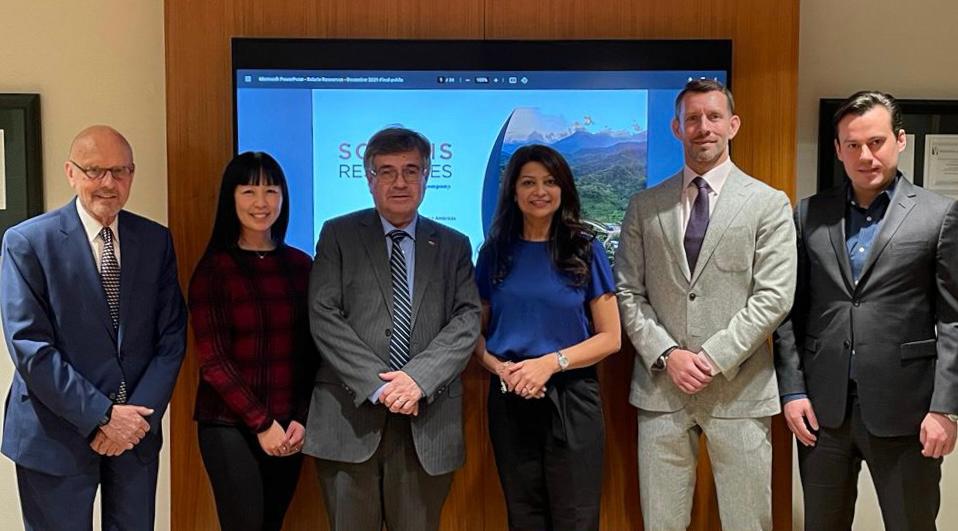
Bank of America (BofA) Global Research analysts have reported that beginning in 2025, the copper market will again suffer a deficit due to the lower number of projects currently underway.
Although global copper production by 2023 will increase by 7.7% after an expected shortfall in 2022, output will fall, due to the underperformance of new copper mine construction in recent years.
“While visibility over the near-term project pipeline is good, activity increases come with a wrinkle,” say the bank’s analysts. “Indeed, many of the projects currently developed have been in the making for almost three decades, and with exploration activity relatively limited in recent years, supply increases may fade from 2025.”
BofA predicts several drawbacks preventing copper production from growing. Edgar Blanco Rand, vice-minister of mining in Chile’s previous government, represented this data in a presentation during LME Week. His presentation showed a pipeline of projects planned for 2029 in Chile at a cost of $74 billion with the goal of achieving production of 7 million tons. Edgar Blanco pointed out a stagnation in production since 2000 with 5.7 million tons after 1990, a decade of rapid growth.
“This implies a capex intensity of around $50,000 per tonne, well above the $10,000 to 20,000 per tonne range seen in recent years. As an aggravating factor, the investment will need to be large enough to offset about 1.5 million tonnes of production losses,” says the bank.
The shortfall in copper production is beneficial to exploration companies because they have valuable projects that other companies are interested in acquiring in order to increase production.
Solaris Resources (TSX:SLS) is responsibly and sustainably pursuing a number of copper projects in the Americas. Its Warintza project, based in Ecuador, is a high-grade open-pit resource within a 7 km x 5 km porphyry copper cluster. The company is also working on discovery drilling at Tamarugo and Ricardo in Chile and Capricho and Paco Orco in Peru.
Warintza’s mining model is a participatory model that promotes state-company-community dialogue based on transparency, collaboration and trust, which contributes to the sustainable socio-economic development of the communities and the project.
For the copper market to continue to sustain steady production and high-quality projects, exploration companies like Solaris with projects like Warintza will become a priority and highly valuable to the major producers looking to grow output. As a result, this is a company that could be a significant part of the solution for this complex market problem.
The above references an opinion and is for information purposes only. It is not intended to be investment advice. Seek a licensed professional for investment advice. The author is not an insider or shareholder of any of the companies mentioned above.
Collective Mining Ltd. (TSXV:CNL) has announced that the high-resolution and deep-penetrating Induced Polarization survey over the Pound target, is progressing on schedule and will be finished in March 2022.
Ari Sussman, Executive Chairman of Collective commented in a press release: “Our San Antonio project has the potential to yield multiple mineralized porphyry and breccia systems. Following on from the exciting grassroots discovery at Pound, we are focused on defining the morphology of this sulphide rich breccia body and other potential porphyry systems. Once the IP results have been interpreted and incorporated with all newly generated data, the Company will provide details on the next phase of drilling for the project in 2022.”
Highlights of the Survey (Figures 1 and 2)
- The primary objective of the survey is to define the size and shape of the pyrite bearing, mineralised breccia body at Pound. The target has been mapped over a strike length of 1.3 kilometres and is open in all directions.
- Previous reconnaissance drilling from two holes returned broad intercepts as follows:
- 710 metres at 0.53 g/t gold equivalent from surface including 133 metres at 0.92 g/t gold equivalent from 470 metre depth (SAC-8); and
- 750 metres at 0.41 g/t gold equivalent from surface including 187 metres at 0.59 g/t gold equivalent from 60 metre depth (SAC-6).
- (Please refer to the press release dated October 27, 2021 for further details including how the AuEq calculation was estimated).
- The IP survey will cover two blocks totalling an area of 2.4 km2 and will also include the COP and Dollar targets. Previous drilling at Dollar returned an intercept 74 metres at 0.62 g/t gold equivalent from 547 metre downhole within a porphyry hosting a stockwork of quartz-magnetite veins which can be drill tested starting at elevations of 600 metres below the previous hole from a valley floor at the base of a mountain slope.
- The COP target has not yet been drilled and is defined by highly anomalous molybdenum (8 ppm to 108 ppm) and gold (up to 2.74 g/t) in soils in association with altered diorite porphyry and quartz veinlets.
- The deep penetrating IP survey will generate 3D chargeability and resistivity data for minimum vertical depths of 800 metres and has been designed to search for disseminated sulphide, porphyry and breccia systems. This IP system has previously been successful in delineating large, mineralized porphyry alteration systems and high-grade veins at the Olympus target within the Guayabales project where three diamond drill rigs are currently operating with first assay results anticipated in March 2022.
Source: Collective Mining
Figure 1: Plan View of the Area Being Covered by IP at the San Antonio Project


Reconnaissance Drilling at the Box Target, Guayabales Project
The Company recently completed a small reconnaissance drilling campaign (three holes totaling 1,011 meters) at the Box target, which is located on the western side of the Guayabales project. The Box target is hosted within a variety of porphyritic diorites that intrude into carbonaceous schist and siltstone rocks.
Surface mapping, rock and soil sampling had revealed soil anomalies related to polymetallic carbonate base-metal veins (“CBM”) in diorite porphyries and at the contact with schist country rocks.
An IP survey was conducted at the conclusion of the field work to reveal three shallow chargeability anomalies known as central, west, and east. Each anomaly was probed with a reconnaissance hole; the results are as follows:
- BOC001 was drilled northwards into the central chargeability anomaly and intersected a broad sericite-pyrite zone with occasional CBM veins in hydrothermal breccia and diorite porphyry returning an intercept of 93 metres grading 0.3 g/t gold, 4 g/t silver and 20 ppm of molybdenum from 127 metres downhole. Further downhole, a CBM vein was intersected at 307 metres depth with a 1.2 metre intersection length yielding 8.7 g/t gold, 47 g/t silver, 7.1% zinc and 5.7% lead.
- BOC002 was drilled to test the western chargeability anomaly and intersected relatively unaltered porphyritic diorite with disseminated sulphides and one quartz-carbonate vein returning 3.1 g/t gold over 70 cm from a downhole depth of 99 metres.
- BOC003 drill tested the eastern chargeability anomaly associated with a northerly trending fault zone and intersected diorite porphyry in faulted contact with schist country rock.
- The area North of BOC001 demonstrates the best potential for follow up exploration. BOC001 is interpreted to represent the peripheral, phyllic alteration zone (pyrite-sericite-quartz) to a gold bearing (grades of 0.5 to 2 g/t gold), fine grained, porphyry diorite located approximately 200 metres north of the hole intercept. This porphyry body is coincident with a hi magnetic anomaly and requires a follow up IP survey and drill testing.
Source: Collective Mining
A Team Reunited From Continental Gold
Collective Mining is a South American exploration and development firm that focuses on identifying and exploring prospective mineral deposits. The goal of the Company is to repeat its previous success in Colombia by making a major new mineral discovery and extending the projection to production, according on the team that developed and sold Continental Gold Inc. for approximately $2 billion in enterprise value.
40% of the Company’s outstanding shares are owned by management, insiders, and close family and friends, all of whom are in full agreement with investors. Collective currently has the option to acquire up to a 100% interest in two projects located in Colombia.
The above references an opinion and is for information purposes only. It is not intended to be investment advice. Seek a licensed professional for investment advice. The author is not an insider or shareholder of any of the companies mentioned above.
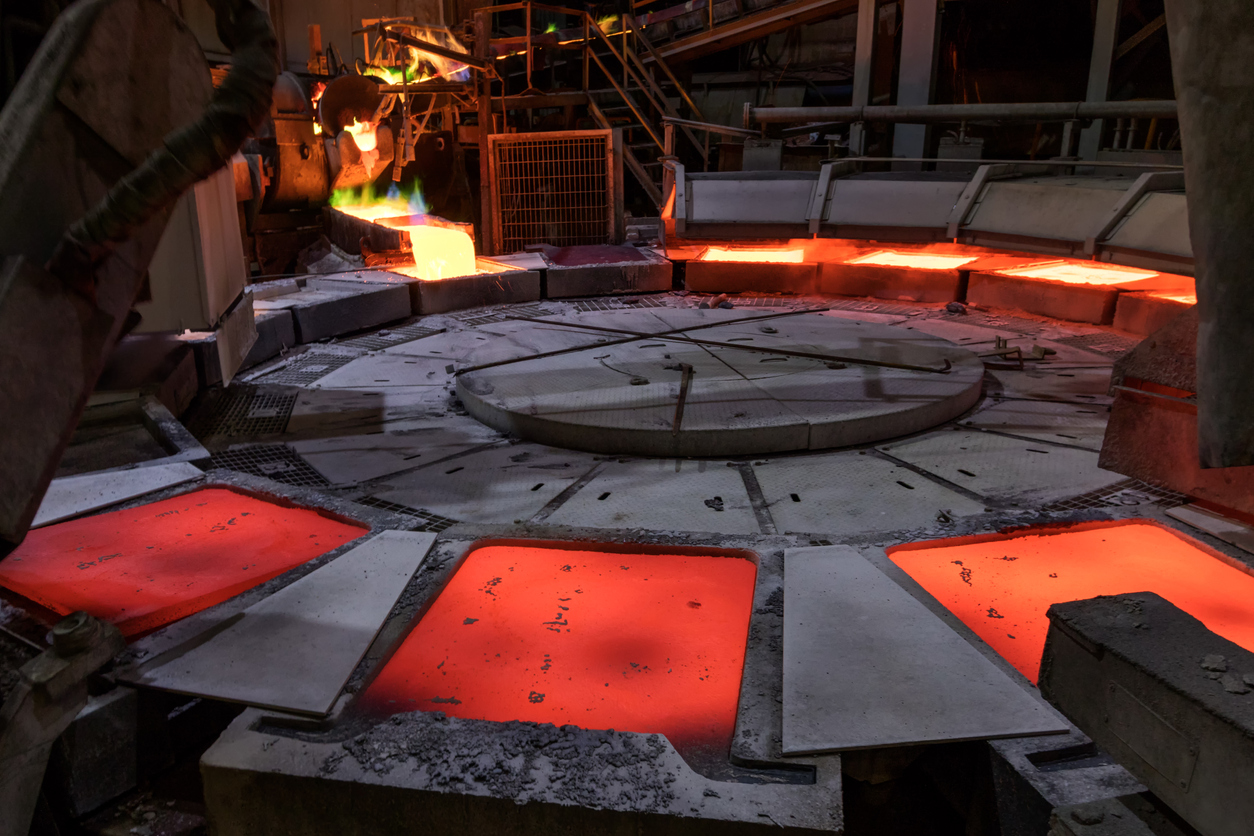
Indonesian company PT Smelting recently announced that it will be constructing its fourth expansion since 1999 at its copper-smelting facility project in Gresik, East Java Province.
The company, which is a joint venture between Mitsubishi Materials and Freeport Indonesia, plans to increase its copper cathodes production capacity to 342,000 tons per year through this US $231 million expansion.
Indonesia currently has a copper ore production rate of 100 million tons per year and has 3.1 million tons of available copper ore reserves. These reserves are estimated to only last approximately 30 more years if no new mills or expansions are built. This may seem like a long period of time, but with the heavy demand for copper due to the increasing interest in items such as electric vehicles (EVs) or other electronic devices, it will not be enough to supply the lasting demand.
Copper and the EV Market
Coordinating Minister for Economic Affairs Airlangga Hartarto touched on the importance of copper within the EV market at an event regarding the new expansion, saying “In the future, with renewable energy, electric vehicles and solar panels all require copper. Therefore, the downstreaming of derivative products needs to be continuously encouraged, especially for the need to produce electronic products.”
Not only will this expansion help increase copper production, but it will also potentially help in the development of downstream mineral and coal products, which will help boost economic growth within the East Java Province. The expansion is set to be completed by September 2023.
PT smelting produces a wide variety of domestic copper products such as copper wire, rods, but also by-products including “sulfuric acid for raw material for fertilizer factories as well as copper slag and gypsum as raw material for fertilizer factories.” The company also exports copper cathodes and copper telluride, and sources its copper from two main locations; the Grasberg mine in Freeport Indonesia and the Batu Hijau mine in Newmont Nusa Tenggara.
“A Center for Copper Downstreaming…”
The expansion project’s main purpose is to increase productivity, however, it will also add a new sulfuric acid plant, increase the number of electrolysis cells in the refinery, and increase the amount of equipment in the plant.
“With the expansion at the first mineral refinery plant in Indonesia, there are 3.3 million tons of concentrate which will later be processed, so that Gresik becomes a center for copper downstreaming…The strength of the copper industry in Indonesia will continue to be improved and the cluster in Gresik certainly needs to be encouraged, so that the Gresik Regent can also become the Regent of Copper,” concluded Minister Airlangga.
Not only did he speak on behalf of the expansion of the smelting facility, Minister Airlangga also witnessed the signing of the Ambulance Agreement on the Distribution of Umbulan SPAM Bulk Drinking Water between PT Air Clean East Java (Perseroda) and the Gresik Regent, according to the press release.
PT smelting has been in business for over 20 years and was originally created in 1996. Commercial production began in 1998 and it was the first copper refinery and smelter in Indonesia. The smelter was originally “designed to produce 200,000 tpy of “LME Grade A” copper cathode from 660,000 tpy of copper concentrate supplied by domestic mining companies.”
The above references an opinion and is for information purposes only. It is not intended to be investment advice. Seek a licensed professional for investment advice. The author is not an insider or shareholder of any of the companies mentioned above.

China’s demand for metals has decreased due to a buildup in its inventory. This has been due to the disruption of activities while the Winter Olympics are taking place as well as disruptions from the Lunar New Year celebrations.
A significant recovery in demand is expected in the coming days and weeks with the culmination of the festivities and the resumption of industrial activity. If consumers accept the higher prices, the markets will be favoured to establish themselves. There are doubts that Beijing is ready to boost demand as although new home prices have been moderate, there are concerns in the real estate sector as well as falling prices in the automobile sector.
The recovery of Chinese manufacturers, meanwhile, has been slower than might have been expected. The resurgence of covid-19 cases in eastern China has been one of the reasons for the downturn in business activity. According to the Shanghai Metal Exchange, copper rod producers reported trading at only 59% of capacity during the previous week.
The accumulation of these events has led to an increase in metal inventories and stockpiles in China. Copper stockpiles tracked by the Shanghai Futures Exchange increased by 28% last week, representing a four-fold increase over previous years. Aluminum and zinc stockpiles have also been affected and increased. Even the Shanghai Premium, which represents an important indicator of import demand for refined copper, has been at a low level since July last year.
According to Steelhome, the construction industry has raised its rebar inventory to a 10-month high. And iron ore stockpiles at Chinese ports have not been consistent since June 2018, even despite efforts and campaigns by the government to cool prices and avoid stockpiling.
Beijing has maintained efforts to keep iron ore and coal markets in check, which is an indication of broader fiscal stimulus that will boost demand. Meanwhile, Hebei’s steel mills are preparing to resume activities that were interrupted due to restrictions to combat pollution during the Winter Olympics.
The above references an opinion and is for information purposes only. It is not intended to be investment advice. Seek a licensed professional for investment advice. The author is not an insider or shareholder of any of the companies mentioned above.
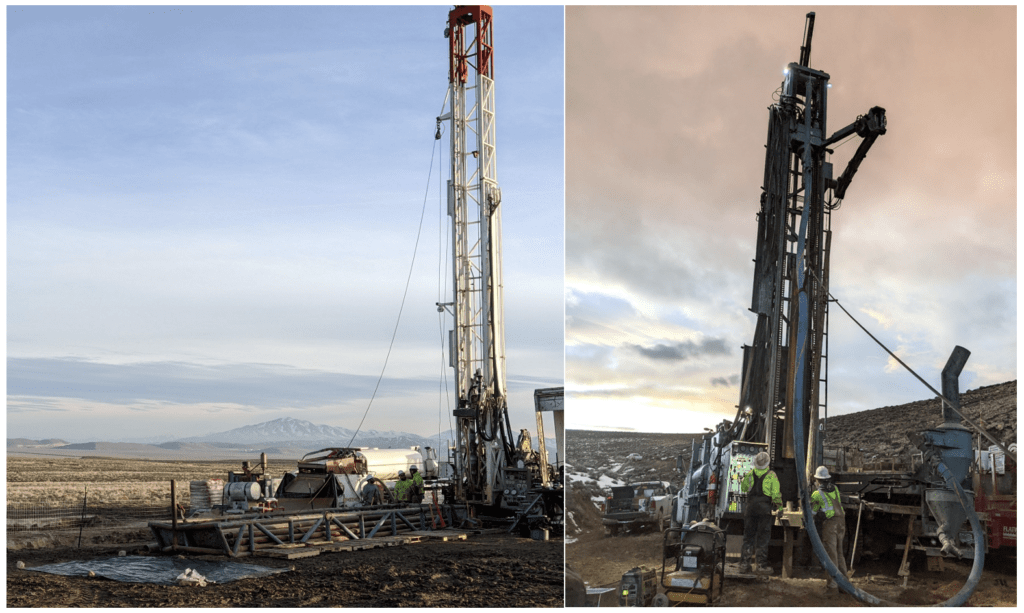
Nevada King Gold Corp (TSXV:NKG) released an update on the drill program at the 100% owned Iron Point Gold Project, Nevada King Gold Corp. The Iron Point Gold Project is located 35 km east of Winnemucca, Nevada, and is one of the remaining Carlin-scale gold exploration targets in Nevada. The project is located between the Battle Mountain and Getchell gold belts and on trend with other world-class gold mines including Twin Creeks and Turquoise Ridge.
In January 2022, Nevada King commenced the five-hole exploration program at and 4000 m depth at Iron Point with the objective of finding more Carlin-type gold mineralization reserved in the lower plate carbonate rocks below Roberts Mountain Thrust, which has remained largely unexplored. This hole resulted in 5.8 m of intercepted mineralization grading 0.17 g/t Au associated with very high pioneer elements.
Cal Herron, Nevada King’s Director of Exploration, stated, “We look forward to the results of this drilling. Our 2019 intercept at the bottom of VM-008C within a lower plate, thin-bedded silty carbonate host, was a major technical success and immediately focused the Company’s attention on Iron Point’s deep gold potential. The discovery of this Carlin-type gold mineralization within this lower plate host rock type, anywhere within the Carlin, Battle Mountain and Getchell gold trends, demands follow-up investigation. This combination of mineralization style and host rock type is known to produce elephant gold deposits throughout northern Nevada.
“By taking a step beyond this technical success with deeper drilling, we hope to identify the “fire” that produced the enormous amount of gold-arsenic-mercury “smoke” found within the upper plate rocks throughout the Iron Point district. Although significant exploration has been carried out at Iron Point in the past, this is the first time an aggressive, deep drilling program focused on the Carlin-type mineralization hosted in the lower plate has been carried out.”
Iron Point
Iron Point has been explored since the mid-1960s by numerous companies seeking commodities such as gold and vanadium. In 1966 they began the search at Newmont and continued with Mirando Goldo in 2008. However, the explorations did not go beyond 300 m depth as they focused exclusively on the upper plate. And so the potential of the Lower Plate rocks beneath Robert Mountain has remained largely intact.
Highlights include:
Three of the five pre-collis are located near a deep north-south-directed structural break (the “Range Front Zone” or “RFZ”) along the eastern margin of the Iron Point mining district.
The first RFZ forebay, IP22-003, has been completed and cased to a depth of 365m. The second RFZ pre-core, IP22-004, is currently being drilled. IP22-003 and IP22-004, with collars 250m apart in a north-south direction, serve as 350m stopes to the ENE and ESE of deep drill hole VM-008C drilled in 2019.
As noted, VM-008C has bottomed at 5.8m grading 0.17 g/t Au accompanied by elevated levels of As, Sb and Hg in “dirty” silicified Lower Plate limestone with a similar appearance to the Roberts Mountain Formation. This zone is considered to have good potential for higher grade gold mineralization at depth. IP22-004 is located approximately 90 m northwest of historic hole CH-IP88-03 drilled by Chevron in 1988 which intersected 7.62 m grading 1.59 g/t Au from 353.57 m depth, including 1.54 m grading 3.68 g/t Au at 355 m. CH-IP88-03 drilled 305 m of alluvium before entering bedrock, but the gold-bearing rock unit is unknown at this time.
Proposed RFZ pre-collar IP22-005, located 600m NNE of drill hole VM-008C, is a 265m step-out from mineralization encountered in 2019 drill hole EG-001C. Grade thickness contours from nearby historic drilling indicate an ENE orientation of Au mineralization in the siliciclastic rocks of the upper plate, a vector that coincides with a steep shoulder in the gravity dataset. EG-001C intersected the following zones of low grade gold mineralization:
- 25.9m grading 0.198 g/t Au from 22.9-48.8m downhole associated with brecciated quartzite, strong sulfide veining, and intrusive dikes
- 10.7m grading 0.303 g/t Au and 50.4 g/t Ag, from 172.2-182.9m downhole hosted in quartzite with intrusive dikes, breccia, and quartz-sulfide veining
- 18.3m grading 0.309 g/t Au from 358.1-376.4m downhole hosted in granodiorite and endoskarn
EG-002, the fourth planned deep test along the RFZ, is a 265m step-out to the south of VM-008C. This drill hole was pre-collared to 305m during the 2019 program but a core tail was not drilled at that time. A 610m core tail is planned during the 2022 program, bringing the total planned depth of this hole to 915m. This hole is situated within the same structural block as VM-008C and is expected to fully test prospective Lower Plate stratigraphy in this area west of the RFZ.
Source: Nevada King Gold Corp.
Nevada King also announced a Phase II drill program for 2022 at its Atlanta Gold Mine property, located 264 km northwest of Las Vegas south of the Battle Mountain Trend.
Highlights include:
This Phase II program will step-out and test the new high-grade discovery below the old Atlanta pit; which returned 5.34 g/t Au over 54.9m, 3.94 g/t Au over 41.2m, and 3.35 g/t Au over 64.1m from 3 holes all starting at surface. The program will also test additional high-priority targets over 1.2km of strike.
Nevada King’s 2022 drill program consists of 13,100 m in 100 holes, divided into 10,000 m of vertical RC drilling and 3,100 m of vertical coring drilling.
Source: Nevada King Gold Corp.
This new program will be largely focused on expanding high-grade mineralization along and west of the Atlanta Mine Fault Zone, starting in high-grade holes drilled in 2021 and moving progressively along strike and down dip to the west. Nevada King drilling in 2022 also involves re-drilling these breccias within the overall resource zone, tying into adjacent high grade intersections as numerous historic holes failed to fully penetrate the higher grade core zones at depth.
The above references an opinion and is for information purposes only. It is not intended to be investment advice. Seek a licensed professional for investment advice. The author is not an insider or shareholder of any of the companies mentioned above.

Mongoose Mining (CSE:MNG), a company dedicated to the acquisition, exploration and evaluation of mineral properties in Canada, announced that it has signed an agreement to acquire Steel Run, a copper, gold and cobalt deposit in Nova Scotia, Canada.
The agreement stipulates that the purchase will be carried out through the issuance of 200,000 common shares by Mongoose Mining to Canadian Goldcamps.
Steel Run is a property located at Mt Thom in Nova Scotia, approximately 22 km east of Truro. It is an IOCG copper, gold and cobalt project, which includes 29 mining concessions on four adjacent properties.
Terry Coughlan, CEO of Mongoose Mining, said in a press release: “The project has an excellent surrounding infrastructure with a powerline and highway access on the claims and located within 90 minutes of international sea and airport facilities.
“Having already demonstrated the existence of high-grade copper and cobalt mineralisation, two strategic metals of Canada’s green future, we’re excited with the addition of the Mt Thom project to our extensive near-drill-ready IOCG portfolio and look forward to it providing some very interesting results.”
The Steel Run deposit was found in the 1970s by Imperial Oil and exploration was only tested for copper at that time. Cobalt mineralization was later recognized at a later stage.
Mongoose Mining also announced last year the acquisition of Spark Minerals, a private Nova Scotia company that owns exploration licenses covering about 3264 hectares or 32.64 km2 in order to carry out exploration of the Cobequid Highlands project.
Mongoose issued 26,904,000 of its shares to the owners of Spark common shares. For the purchase of Mongoose common shares, 2,500,000 warrants were also issued in exchange for 2,500,000 warrants to purchase Spark common shares. This exchange gives each holder the right to acquire one Mongoose share at any time at a price of $0.25 per share until December 30, 2023. As well as the 360,000 outstanding Spark options will be converted into 360,000 Mongoose shares at a price of $0.05 per share.
Mongoose Mining is a mineral exploration company led by a team highly experienced in exploration, mine development, operations and raising capital. The company is focused on the historically iron ore rich regions of Nova Scotia which is an area with potential for discovery of IOCG type deposits. Mongoose Mining plans to acquire strategic properties that will allow it to deploy its exploration excellence and responsible mining practices to build a multi-asset, multi-jurisdictional metals company.
The above references an opinion and is for information purposes only. It is not intended to be investment advice. Seek a licensed professional for investment advice. The author is not an insider or shareholder of any of the companies mentioned above.
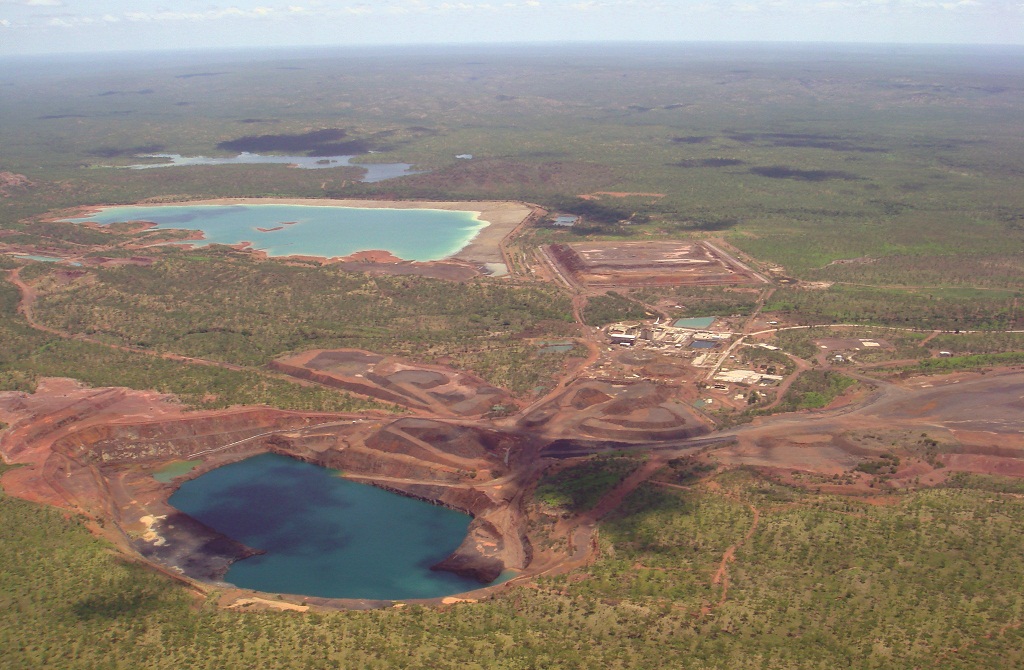
Vista Gold (NYSE:VGZ) announced the results of the feasibility study for the Mt Todd gold project property in the Northern Territory, Australia. Gold reserves increased 19% to 6.98 million ounces, totaling 479,000 ounces of gold per year over the first seven years of commercial activity.
Vista’s President and CEO, Frederick H. Earnest, commented, “The FS affirms the strength of Mt Todd’s gold production capacity and ability to deliver solid economic results at a time when inflationary pressures are having significant impacts on operating mines and development projects alike. Completion of the FS represents another major step in de-risking Mt Todd and readying the project for development. The scale, quality of work completed and location of Mt Todd, together with the completion of the FS and the fact that all major authorizations for development have been obtained, distinguish Mt Todd as a unique development opportunity. We believe the results of the FS will appeal to many potential partners, investors and lenders and allow us to evaluate a broad range of development alternatives as we continue to focus on maximizing shareholder value”.
The mine life is projected to be 16 years, during which time the project is expected to generate strong cash earnings. The reliability study (FS)was conducted for a 50,000 tonne per day project and some highlights of the results are:
- After-tax NPV5% of $999.5 million and IRR of 20.6% at a $1,600 gold price and a $0.71 Fx rate( one);
- After-tax NPV5% of $1.5 billion and IRR of 26.7% at a $1,800 gold price and $0.71 Fx rate;
- After-tax cash flow at a $1,800 gold price of $2.1 billion for years 1-7 of commercial operations;
- 19% increase in proven and probable mineral reserves, now estimated to be 6.98 million ounces of gold (280.4 million tonnes at 0.77 grams of gold per tonne (“g Au/t”)) at a cut-off grade of 0.35 g Au/ t; life of mine grade to the grinding circuit after ore sorting of 0.84 grams of gold per tonne;
- Average annual life of mine production of 395,000 ounces, including average annual production of 479,000 ounces of gold during the first seven years of commercial operations;
- Life of mine average gold recovery of 91.6%;
- Average cash costs of $817 per ounce (life of mine), including average cash costs of $752 per ounce during the first seven years of commercial operations(2);
- Average all-in sustaining cost (“AISC”) of $928 per ounce (life of mine), including average AISC of $860 per ounce during the first seven years of commercial operations;
- Mine life of 16 years (increase of 3 years); and
- Initial capital requirements of $892 million (8% increase), which reflects the use of a third-party owner/operator of the power plant.
Mr. Ernest added: “Our attention will now focus more intensely on increasing shareholder value and the realization of the intrinsic value of Mt Todd. We believe Mt Todd’s location, scale, economics, permitting status, and extensive technical work represent a unique near-term development opportunity and allow us to evaluate a broad range of development partners, structures and alternatives as we continue to focus on maximizing shareholder value. ”
The technical aspects of FS are backed by metallurgical testing and rigorous design standards that reflect Vista’s strict approach. Some of the design and operation specifications include: the use of modern technologies, and the use of large processing equipment that guarantees performance capacity.
A summary of the FS results is contained in the following table:
| 50,000 tpd project (1) | Years 1-7 (2) | Life of mine (3) |
| (16 years) | ||
| Average plant food grade (g Au/t) (4 ) | 1.01 | 0.84 |
| Average annual gold production (koz) | 479 | 395 |
| Average recovery (%) | 92.2% | 91.6% |
| Total gold payable (koz) | 3,353 | 6,313 |
| Cash costs ($/oz) (5) | $752 | $817 |
| AISC ($/ounce) (5) | $860 | $928 |
| Stripping ratio (waste:ore) | 2.77 | 2.51 |
| Initial capital (millions) | $892 | |
| Payback after taxes (months) | 47 | |
| NPV after taxes 5% (millions) | $999.5 | |
| IRR (after taxes) | 20.6% |
The FS uses a price of natural gas comparable to other energy facilities in the NT. Due to the project’s location, the company sees the advantage of being close to NT’s main natural gas transmission line. This would allow the company to achieve a lower price of natural gas with a long-term gas supply contract.
The above references an opinion and is for information purposes only. It is not intended to be investment advice. Seek a licensed professional for investment advice. The author is not an insider or shareholder of any of the companies mentioned above.
Trillium Gold (TSXV:TGM) has announced that the company has increased the offering of the private placement announced on February 4, 2022. Investor demand has been significant and the offering has been oversubscribed. Accordingly, the company expanded the offering from C$5.0 million to up to C$6.5 million for the sale of any combination of the following:
- Units of the Company (each, a “Unit”) at a price of C$0.53 per Unit;
- Flow-through Units of the Company (each, a “FT Unit”) at a price of C$0.60 per FT Unit; and;
- Charitable FT Units to be sold to charitable purchasers (each, a “Charity FT Unit”) at a price of C$0.75 per Charity FT Unit.
Source: Trillium Gold Mines
Red Cloud Securities Inc. who is acting as bookrunner and agent under the offering, will have an option, exercisable in whole or in part, until 48 hours prior to the closing of the offering, to sell up to an additional C$1,000,000 in any combination of offered securities at the offering prices.
The total proceeds from the sale of FT Shares will be invested in “Canadian exploration expenses”. Specifically, the company intends to explore the Red Lake properties to utilize the net proceeds raised from the offering, among other general working capital purposes. Around February 28, 2022 is the scheduled closing date of the Offering which is subject to certain conditions. Among them, TSX Venture Exchange approval, and the Unit Shares, FT Shares, and Warrant Shares will have a hold period of four months and one day from the closing date.
Trillium Gold Discovers Multiple Gold Anomalies Along Confederation Belt Properties
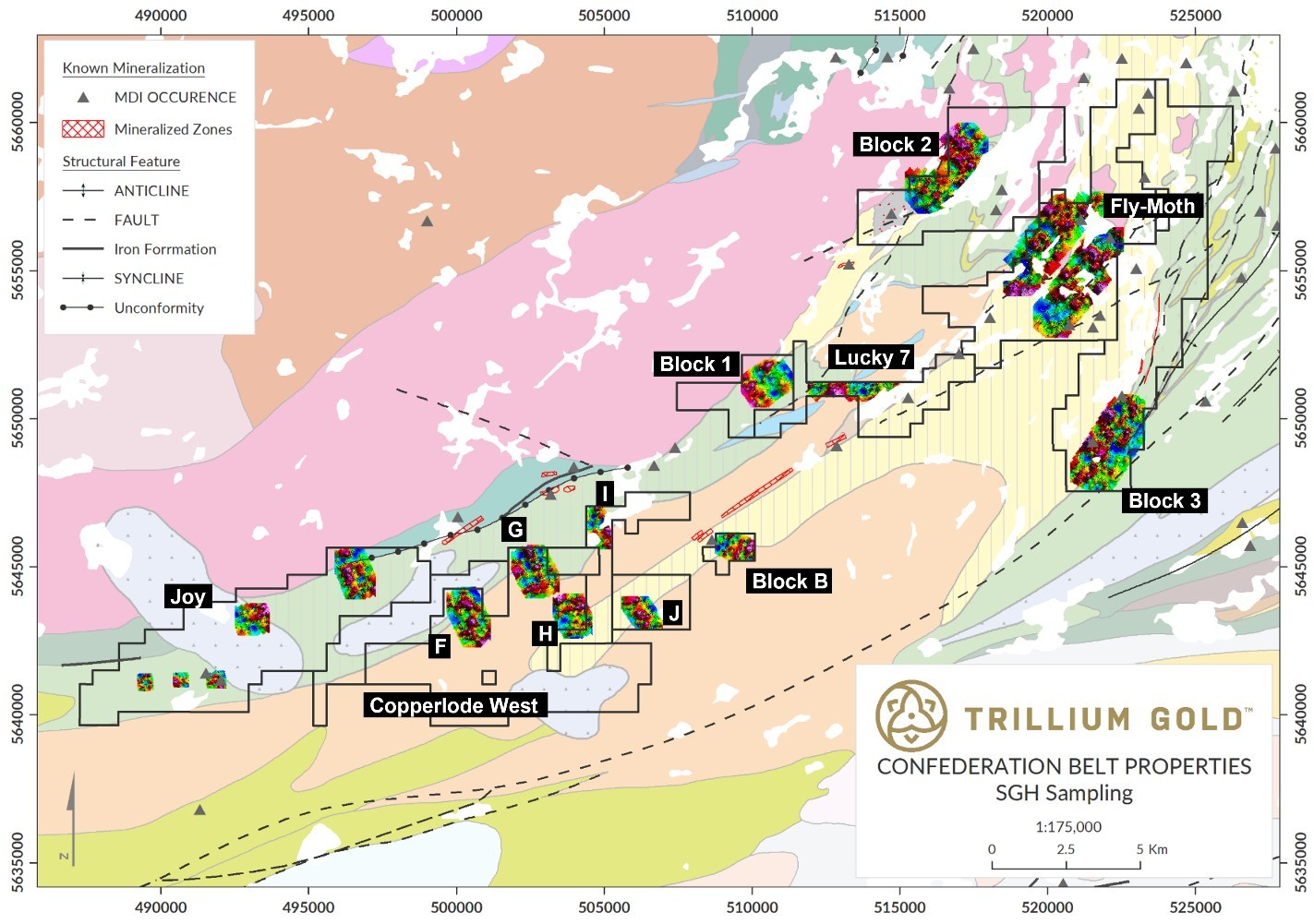
Earlier this month Trillium Gold reported findings from the spatiotemporal geochemical hydrocarbon (SGH) sampling program completed during the summer on the Company’s Confederation Belt properties.
Independent results and interpretations provided by Actlabs from the 17 SGH regional soil sampling grids highlighted significant gold probability anomalies over multiple target types. These encouraging anomalies will serve as priority targets for Trillium Gold’s second phase of exploration work in the 2022 field season and, together with the sampling and prospecting program carried out concurrently, are expected to generate multiple drill targets.
The newly identified relationships among SGH-generated gold targets, historical gold assays and possible structural and lithological controls, effectively launch Trillium Gold’s Confederation belt properties into a new era in gold exploration.
The above references an opinion and is for information purposes only. It is not intended to be investment advice. Seek a licensed professional for investment advice. The author is not an insider or shareholder of any of the companies mentioned above.
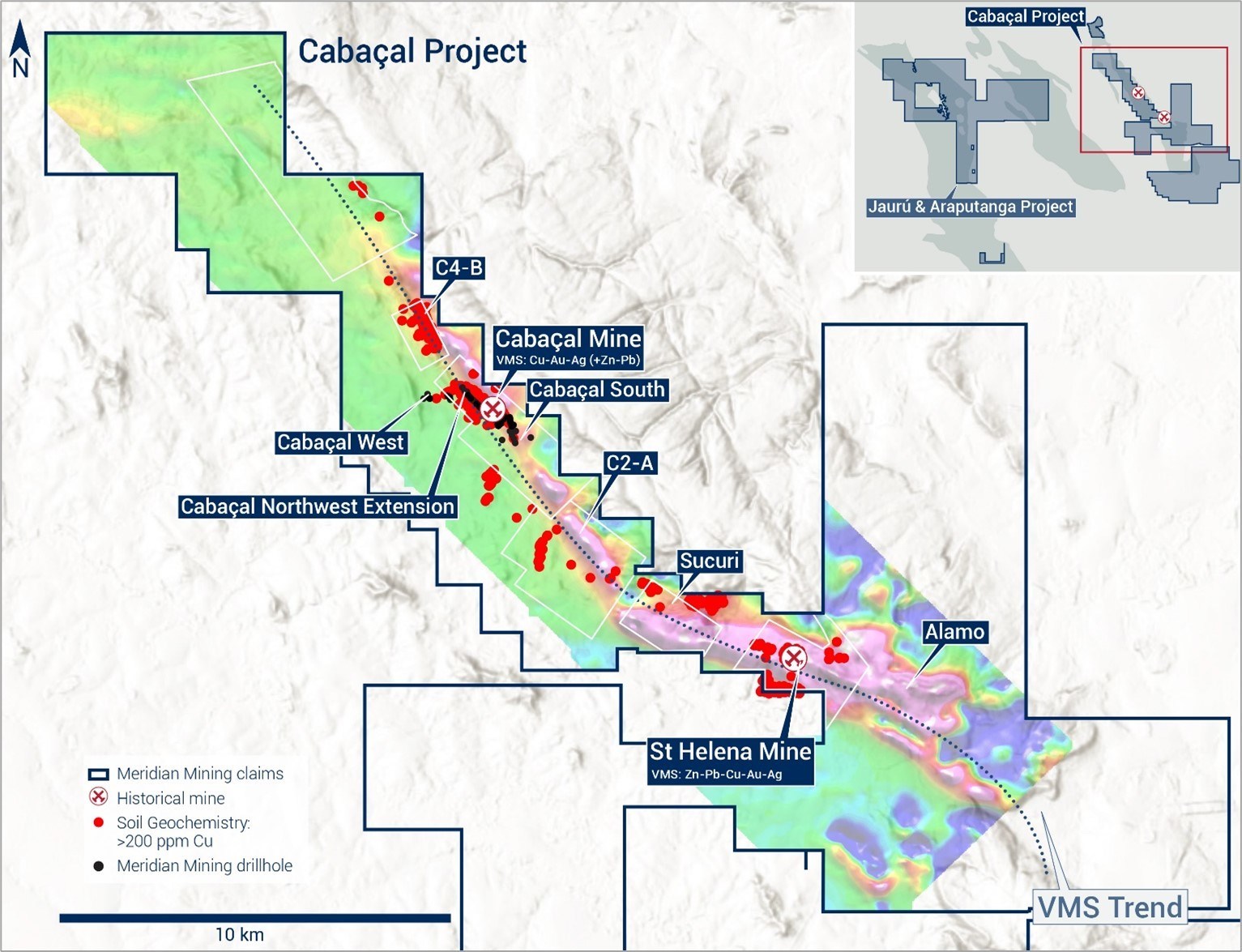
Meridian Mining (TSXV:MNO) reported that it has identified open pit potential at the historic Santa Helena mine. The company announced positive results from the evaluation of the historic underground zinc, copper, gold, silver and lead mine.
The results determined that the Santa Helena project has great potential for open pit development in the future due to its remnant massive sulfide deposit, unmined surface mineralization, open historical drill results and the late stage Carbaçal centurion gold overprint.
Dr. Adrian McArthur, CEO and President, commented, “…Our first assessment of Cabaçal’s other historic subway mine at Santa Helena is very positive. It also operated as a selective mine, focused on shallow massive sulfide lenses, but closed prematurely after the collapse of commodity prices in 2008. After the Cabaçal mine, Santa Helena is perhaps the most advanced historic prospect with potential to be developed as an open pit satellite. operation, and as with the Cabaçal mine, the mineralization at Santa Helena is well defined, starting at surface and open.”
Historical drill results will be targeted for confirmation, interbedding and lateral extensions; including:
- JUCHD031: 27.6 m @ 4.1 % CuEq* (1.6 % Cu, 1.5 g/t Au, 36.3 g/t Ag and 4.4 % Zn) of 24.9 m ;
- FSS24: 17.5 m @ 3.6 % CuEq (0.7 % Cu, 1.0 g/t Au, 25.5 g/t Ag and 7.2 % Zn) from 21.5 m
The historical resource estimate for Santa Helena (also known as Monte Cristo) was completed by SRK and submitted to Prometálica in a report dated March 30, 2007: Technical Report NI 43-101 Brazilian Resources Inc. Monte Cristo Mine. Mato Grosso State, Brazil. SRK Consulting report, project number 164802. Compiled by Nick Michael, Clay Taylor, Alva Kuestermeyer. A qualified person has not done sufficient work to classify the historical estimate as current mineral resources or mineral reserves. Meridian has not treated the resource and reserve indicated in this report as current mineral resources or mineral reserves for the purposes of National Instrument 43-101.
Santa Helena Evaluation
With Meridian’s programs at Cabaçal advancing, an initial assessment of the second historical mining center at Santa Helena is completed. Santa Helena’s trend originally formed part of BP Minerals “C2C” target, discovered as a localized gold/base metal stream sediment anomaly (Figure 1). Areas of anomalous geochemistry were followed up with a gossan search, with samples located in subcrop returning characteristic VMS geochemistry (Zn-Cu-Pb signature), many also with an elevated precious metal signature (gold: 0.8 – 16.2 g/t and silver: 2.5 – 100.2 g/t). Multiple gold-count-in-soil anomalies were detected; one extending over 400m along the western end of the deposit, and another extending over 750m to the east. Mineralization has been intersected in drilling over a strike length of 1000m. Associated base metal soil anomalies extend over 1200m, with satellite gold in soil anomalies present in offset positions to the south and east.
BP Minerals conducted three campaigns of drilling (75 holes for 10,400m), delineating a sulphide body hosted by stratigraphy very similar to the Cabaçal Mine’s, with the main units being banded cherts, felsic volcanic / volcaniclastic rocks, chloritic schists and gabbroic intrusions. The sulphide assemblage of the C2C deposit was dominated by sphalerite, with chalcopyrite, pyrrhotite, and galena. Prometálica Mineração Ltda (“Prometálica”) completed an additional 39 diamond holes for 2,479m between 1999 and 2001. The underground mine operated between 2006 to 2008, closing earlier than planned during a sharp decline in the zinc price. Monthly ROM records archived on Prometálica’s production server indicate that from October 2006 – August 2008, production amounted to 439,813t @ 6.65% Zn, 1.62% Cu, 1.77g/t Au & 43.02g/t Ag, leaving a over half of the historical reserve unexploited1.
1 The historical resource estimate for Santa Helena (also referred to as Monte Cristo) was completed by SRK and presented to Prometálica in a report dated 30 March 2007: NI 43-101 Technical Report Brazilian Resources Inc. Monte Cristo Mine. State of Mato Grosso, Brazil. Report by SRK Consulting, Project Number 164802. Compiled by Nick Michael, Clay Taylor, Alva Kuestermeyer. A qualified person has not done sufficient work to classify the historical estimate as current mineral resources or mineral reserves. Meridian has not treated the resource and reserve stated in this report as a current mineral resource or reserves for purposes of National Instrument 43–101.
Modelling was constrained by a 1% Zinc-Equivalent (ZnEq) grade shell. The ZnEq calculation was applied for reporting the estimates (ZnEq % = Zn% + (2.14 * Cu%) + (0.39 * Au ppm) + (0.007* Ag ppm); Metallurgical Recovery = 89% Zn, 89% Cu, 65% Au, 61% Ag; Au price USD 570 / oz; Ag price USD 11 / oz, Cu price USD 3.36/ lb; Zn price = 1.57 / lb). A density of 3.1 was assigned to all blocks, based on data obtained from 182 specific gravity readings on BP Minerals drill core. A block model was constructed based on block dimensions 15m x 5m x 5m. An inverse distance search method was applied with a three-pass search method for classifying blocks as measured, indicated and inferred. Resources were calculated as at December 21 2006, corrected for mining depletion and including stockpiles, at a 3.0% ZnEq cut-off grade, defining Measured and Indicated resources of 1,120,000t @ 6.20% Zn, 1.32% Cu, 1.29g/t Au, 41.65g/t Ag, and Inferred resources of 37,000t @ 5.81% Zn, 1.29% Cu, 128g/t Au, 40.94g/t Ag. Proven and probable reserves were stated as 1,188,646t @ 5.84% Zn, 1.24% Cu, 1,22g/t Au & 39.14g/t Ag. The Life of Mine Plan envisaged a five-year operation (2006 – 2011) producing at 270,000t per year.
At the moment the defined mineralization is shallow as much of the target is at depths of < 100 m below surface. Meridian still sees the potential to optimize and increase the capacity of Santa Helena for open pit development by feeding a processing plant centered on the Cabaçal operation.
Source: Meridian Mining
The Next Mid-Tier Copper and Gold Developer in Brazil
Meridian Mining is a company focused on becoming the next mid-tier copper and gold developer and producer in Brazil. The company’s flagship project is Cabaçal, an advanced stage VMS district scale Cu-Au project located in the state of Mato Grosso, discovered in 1983 by BP Minerals. The 36 km Cabaçal VMS belt hosts a large historic resource and two historic high grade selective subway mines.
The above references an opinion and is for information purposes only. It is not intended to be investment advice. Seek a licensed professional for investment advice. The author is not an insider or shareholder of any of the companies mentioned above.

Collective Mining (TSXV:CNL) and the University of Caldas have entered into a strategic alliance to carry out collaborations in various projects of academic and research interest that will help increase scientific knowledge in different areas in the Caldas region.
The rector of the University of Caldas, Alejandro Ceballos Méarquez commented, “We are committed to contribute to the scientific knowledge of the country while working hard to offer our students and professors different opportunities to increase access to technology, innovation and academic excellence. We are convinced that this agreement will help us to continue working in that direction and strengthen alliances with important actors present in our Department.”
The University of Caldas is considered the most prestigious public university in the region and has more than 15,500 students.
One of the most representative objectives of the agreement is to strengthen research, technical assistance, promote continuing education and exchange academic programs in geology, biology and social work. With this, students and professors will be enriched in a positive way at an educational and scientific level. Among the most interesting plans outlined in the agreement between Collective Mining and the University of Caldas is to develop geological knowledge of the Middle Cauca Belt in Colombia, the location of Collective Mining’s two projects, San Antonio and Guayabales.
“We are pleased to have reached an agreement with such an important and prestigious academic institution,” stated Omar Ossma, CEO and President of Collective. “Developing an alliance with the University of Caldas has been a goal of Collective Mining given the vast majority of the Company’s employees are from the Department of Caldas and more than 90 percent of our staff working within our geology department are graduates of the Faculty of Geology at the University of Caldas. We are certain that this alliance will benefit all parties involved”.
Elvira Cristina Ruiz Jimenez, Dean of the Faculty of Natural Sciences said “I believe that this alliance will bring many academic possibilities to students of our faculty and to other programs with a social component in our institution. We are convinced that together we will be able to generate new scientific knowledge for the country and have new fields for the development of academic practices and undergraduate and postgraduate research”.
Collective Mining is a company formed by the Continental Gold team, responsible for the discovery, licensing and construction of the largest gold mine in Colombia. The company is focused on the discovery and development of prospective mining projects in South America. The company is currently advancing rapidly in the exploration of large-scale porphyry copper-gold-molybdenum deposits in the Caldas department of Colombia. Collective Mining is drilling at the Guayabales project, strategically located near Marmato, a world-class deposit.
The above references an opinion and is for information purposes only. It is not intended to be investment advice. Seek a licensed professional for investment advice. The author is not an insider or shareholder of any of the companies mentioned above.

Trillium Gold Mines (TSXV:TGM) has announced a major change in its team. To attend to other commitments, Mr. Robert Schafer is stepping down from his position as non-executive chairman of the company.
In his stead, Russell Starr, President & CEO of Trillium has taken over as Chairman. Russell Starr stated, “Bob has served as a Director of the Company since July 2020, during which time he has made countless contributions to the growth of the Company. We wish to express our sincere gratitude for his dedicated commitment as we look ahead to launch Trillium Gold into a new era in gold exploration in the Red Lake Mining District.”
Russell Starr is an entrepreneur and financial professional with over 20 years of experience with major financial institutions such as RBC, Scotia Capital, and Orion Securities in corporate finance and mergers & acquisitions, as well as with public mining and exploration companies in senior corporate advisory and development roles. He was previously in the Ph.D program for Economics and co-founded a large Canadian investment dealer.
In the position of Vice-President of Exploration is Bill Paterson, a professional geologist with several years of experience with Goldcorp Inc. in Red Lake Ontario as Exploration Superintendent and managed the ultra-deep surface drilling program and underground development of the world-class Cochenour Mine. He is considered an expert on Confederation Greenstone Belts.
Ian McNeilly, a chartered accountant with over 20 years of executive financial management and leadership experience in the global mining industry, serves as CFO and Corporate Secretary of Trillium Gold. An expert in strategic planning, financial controls, capital funding and metal trading, Ian was in charge of Treasury and Operations at BMO Nesbitt Burns in Toronto and London, UK.
Donna Yoshimatsu is Vice President, Corporate Development and Investor Relations. Her extensive experience spans more than 25 years in the mining sector. She has held senior investor relations positions with some of the TSX’s most successful companies including Franco-Nevada and SNC-Lavalin.
Trillium Gold Mines Inc. has a dominant land position in the Red Lake mining district of Northern Ontario, one of the world’s premier mining areas.
The above references an opinion and is for information purposes only. It is not intended to be investment advice. Seek a licensed professional for investment advice. The author is not an insider or shareholder of any of the companies mentioned above.
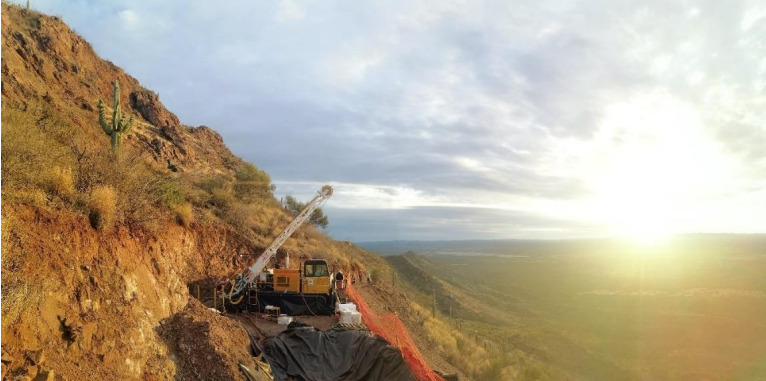
Benjamin Hill Mining Corp. recently announced it has completed three drilling holes at its Sonora property, located within the Caborca gold belt, as a part of its inaugural drill program.
The company’s main goal for commencing the program is to “intercept and delimit mineralized structures, to better define alteration footprints and to explore for the source of mineralization.” The drilling campaign will consist of 34 exploration drill holes total over four different mineralized areas within the Sonora project, which are Sonora Copper, El Fierro, Caracahui, and La Salada.
The first two out of the three holes already drilled focused on the Sonora Copper area, which is defined as a “striking mineralized structure which outcrops over 1070 metres in length and extends to a depth of at least 200 metres.” The third hole was drilled in the Caracahui area and hit depths of 224.5 metres, and drilling has already begun at the fourth hole in the same area.
While using a field mapping program to “pursue interesting gravimetrical targets,” the company discovered additional mineralization that needs to be further investigated. The plan is to have the drill test the Crestado mineralized system, which is in the southern part of the Caracahui Area, in order to help define the additional minerals.
| Hole Name | Exploration Area | Depth (m) | Status |
| SGD-22-001 | Sonora Copper | 200.05 | Completed |
| SGD-22-002 | Sonora Copper | 302.4 | Completed |
| SGA-22-001 | Caracahui | 224.5 | Completed |
Table 1. Completed Drill Holes to Date
Source: Benjamin Hill Mining
The company is known for operating two main projects within the The Caborca gold belt, the Sonora property and the Benjamin Hill property. The Benjamin Hill property is home to several historical mines that are still in operation, including La Herradura, San Francisco-Llano, El Chanate, Soledad Dipolos, and Noche Buena. The San Francisco mine is known to have produced over one million ounces of gold to date.
Completed Geophysical Survey
Benjamin Hill recently completed an induced polarization /resistivity survey at its Sonora property, which is used to detect geological anomalies that are under the ground. The survey took place across eight different locations, including Sonora Copper, El Fierro, Caracahui, La Quebrada, El Crestado, El Tanque, Las Antennas and La Salada.
The company used survey lines oriented from east to west to complete the survey and “perpendicularly transect known north-south mineralization trends.” These mineral trends are known to be enriched with gold, silver and copper.
The main goal of conducting this survey is to locate potential geological anomalies that indicate the subsurface vertical and lateral continuity of surface mineralization and hydrothermal alteration. The survey also provides confirmed, extrapolated drilling targets, and may provide additional mineral property information, unknown areas of mineralization, and a buried fertile pluton.
The above references an opinion and is for information purposes only. It is not intended to be investment advice. Seek a licensed professional for investment advice. The author is not an insider or shareholder of any of the companies mentioned above.
Junior resource company RT Minerals recently announced that 10 drilling holes have been completed at its Link-Catharine RLDZ property, located approximately twenty-five km southeast of Kirkland Lake, Ontario.
Figure 1: Drill hole plan – select drill holes and intervals defining Gold Trend.
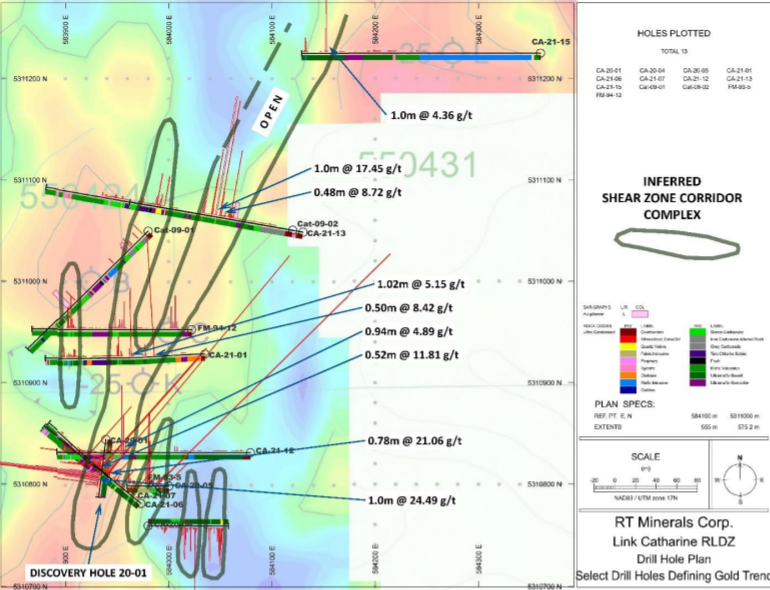
The 10 holes were drilled between depths of 157m to 363m of core length and at declinations of 55 to 70 degrees. “The holes intersected ultramafic-basalt, green carbonate, altered ultramafics, gabbro, porphyry and syenite dykes, as well as a lamprophyre dyke indicating a deep mantle genesis to the units within the SD Zone and associated igneous intrusive rocks. Gold mineralization is present at various locations in all rock types that make up the entire mafic volcanic package,” according to the press release.
Out of the 10 drilling holes, nine holes successfully tested the width of the entire shear-deformation zone, and one hole tested a “small IP anomaly to the north of current drilling within the northwestern portion of the property.” As well, eight out of the 10 drilling holes were found to have “widespread, intermittent low- and high-grade gold mineralization.”
President and CEO of the company Mr. Doug Andrews commented on the results, and touched on a new target that was identified, saying “In addition to the gold bearing 90m wide SD Zone which has been tested for over approximately 450m of strike length and to a core depth of 363m, the Company has also identified the large Ridge Target Area coincident with shallow and deep 3D-IP anomalies and magnetic low features within an area of approximately 3000 metres long by 400m wide. An exceedingly small test of the RTA western edge was tested in current drilling by CA-15-21 and carried significant gold mineralization in the bottom of the hole. The current interpretation is the 3000m by 400m RTA may be a main influencing event and feature for the widespread intermittent, high and low, gold mineralization observed in Hole CA-15-21 and in all holes drilled within the connecting SD Zone which obliquely strikes NE into the RTA and associated anomalies.”
Future drilling at the Ridge Target will consist of approximately 20 250 metre holes, and no date has been set as the drilling is subject to the company securing further exploration funding.
The assay results from the RTM drill program are in the table below:
Table 1 Assay Results Received For RT Minerals Corp. Fall 2021 Drilling — Link Catharine RLDZ Property
| Hole No. | From (m) | To (m) | Interval (m) | Au g/tonne | |
| CA 21-06 | 16.60 | 17.52 | 0.92 | 1.73 | |
| CA 21-06 | 35.94 | 36.40 | 0.46 | 1.59 | |
| CA 21-06 | 45.24 | 45.60 | 0.36 | 0.41 | |
| CA 21-06 | 49.10 | 49.58 | 0.48 | 1.86 | |
| CA 21-06 | 57.54 | 58.00 | 0.46 | 0.30 | |
| CA 21-06 | 66.90 | 96.06 | 29.16 | 0.65 | |
| CA 21-06 | including all of the following: | ||||
| CA 21-06 | 66.90 | 67.70 | 0.80 | 1.06 | |
| CA 21-06 | 70.39 | 72.70 | 2.31 | 4.74 | |
| CA 21-06 | incl. | 70.39 | 72.00 | 1.61 | 6.21 |
| CA 21-06 | incl. | 70.39 | 70.74 | 0.35 | 10.90 |
| CA 21-06 | and incl. | 71.48 | 72.00 | 0.52 | 11.81 |
| CA 21-06 | 76.73 | 81.00 | 4.27 | 0.65 | |
| CA 21-06 | 93.97 | 96.06 | 2.09 | 1.63 | |
| CA 21-06 | incl. | 93.97 | 94.53 | 0.56 | 4.90 |
| CA 21-07 | 35.40 | 36.38 | 0.98 | 1.35 | |
| CA 21-07 | 40.00 | 41.00 | 1.00 | 0.55 | |
| CA 21-07 | 96.00 | 106.73 | 10.73 | 2.26 | |
| CA 21-07 | incl. | 97.00 | 103.00 | 6.00 | 3.80 |
| CA 21-07 | incl. | 97.40 | 100.07 | 2.67 | 7.53 |
| CA 21-07 | incl. | 97.40 | 98.18 | 0.78 | 21.08 |
| CA 21-07 | and incl. | 99.00 | 100.07 | 1.07 | 3.27 |
| CA 21-07 | 109.70 | 110.50 | 0.80 | 0.35 | |
| CA 21-07 | 111.48 | 112.19 | 0.71 | 0.31 | |
| CA 21-08 | NSV | ||||
| CA 21-09 | NSV | ||||
| CA 21-10 | 81.00 | 81.90 | 0.90 | 0.48 | |
| CA 21-10 | 89.10 | 90.10 | 1.00 | 0.31 | |
| CA 21-10 | 149.00 | 151.03 | 2.03 | 1.22 | |
| CA 21-10 | 251.10 | 255.30 | 4.20 | 0.79 | |
| CA 21-10 | incl. | 251.10 | 254.00 | 2.90 | 1.00 |
| CA 21-10 | incl. | 252.00 | 253.00 | 1.00 | 1.56 |
| CA 21-11 | 114.00 | 118.14 | 4.14 | 0.47 | |
| CA 21-11 | 266.52 | 267.50 | 0.98 | 0.51 | |
| CA 21-12 | 100.00 | 100.50 | 0.50 | 0.30 | |
| CA 21-12 | 103.20 | 103.69 | 0.49 | 0.34 | |
| CA 21-12 | 170.50 | 171.50 | 1.00 | 0.82 | |
| CA 21-12 | 173.33 | 177.50 | 4.17 | 1.98 | |
| CA 21-12 | incl. | 173.33 | 176.40 | 3.07 | 2.62 |
| CA 21-12 | incl. | 175.46 | 176.40 | 0.94 | 4.89 |
| CA 21-12 | 194.00 | 195.00 | 1.00 | 0.33 | |
| CA 21-12 | 247.10 | 248.06 | 0.96 | 0.33 | |
| CA 21-12 | 254.23 | 256.72 | 2.49 | 0.42 | |
| CA 21-13 | 97.00 | 141.00 | 44.00 | 0.44 | |
| CA 21-13 | including 8 intervals: | ||||
| CA 21-13 | 114.00 | 116.48 | 2.48 | 2.66 | |
| CA 21-13 | incl. | 115.00 | 116.48 | 1.48 | 4.06 |
| CA 21-13 | incl. | 116.00 | 116.48 | 0.48 | 8.72 |
| CA 21-13 | 126.00 | 128.29 | 2.29 | 2.40 | |
| CA 21-13 | incl. | 127.00 | 128.29 | 1.29 | 3.88 |
| CA 21-13 | incl. | 127.00 | 127.67 | 0.67 | 4.93 |
| CA 21-13 | 137.83 | 141.00 | 3.17 | 1.31 | |
| CA 21-13 | incl. | 137.83 | 139.00 | 1.17 | 1.90 |
| CA 21-13 | 198.00 | 206.00 | 8.00 | 0.66 | |
| CA 21-13 | incl. | 203.00 | 206.00 | 3.00 | 1.21 |
| CA 21-13 | incl. | 203.00 | 204.00 | 1.00 | 2.38 |
| CA 21-13 | 225.00 | 226.00 | 1.00 | 0.34 | |
| CA 21-14 | 128.00 | 129.00 | 1.00 | 0.29 | |
| CA 21-15 | 322.00 | 324.00 | 2.00 | 3.04 | |
| CA 21-15 | incl. | 322.00 | 323.00 | 1.00 | 4.36 |
| CA 21-15 | 353.07 | 354.62 | 1.55 | 0.85 | |
The intervals reported in the table above represent core lengths. True widths cannot be accurately determined from the information available.
Source: RT Minerals Corp.
In addition to the drilling results, six one to four kilogram grab samples were collected from four different locations within about a 4 square metre area within the large 100 metre by 100 metre outcrop returned the following results:
Grab Sample #CA-01-21 – 0.85 g/t Au; Grab Sample #CA-02-21 – 1.26 g/t Au; Grab Sample #CA-03-21 – 1.34 g/t Au; Grab Sample #CA-04-21 – 0.16 g/t Au; Grab Sample #CA-05-21 – 0.07 g/t Au; and Grab Sample #CA-06-21 – 1.14 g/t Au.
Source: RT Minerals Corp.
The Canadian company holds interest in two projects, the Link-Catherine property located 25 kilometers SSE of Kirkland Lake, Ontario and the Norwalk gold property, located approximately 6 kms south of Wawa, Ontario.
The RT Minerals team continues to grow as the company announced the appointment of Mr. Douglas J. Andrews, BSc., MSc. as the President and Chief Executive Officer of the company, along with welcoming Mr. Gary Claytens and Mr. William S. Elston to the board of directors of the company in November, 2021.
Mr. Andrews was already a director of the company, replacing Mr. Donald (Dan) M. Clark as President and CEO. Mr. Clark has resigned as Chairman, President, CEO and a director of the company but remains a consultant to the company and its exploration team on the Catharine gold properties. The company also acknowledged the resignation of Mr. Edmond Hatoum, who was a part of the board of directors.
The above references an opinion and is for information purposes only. It is not intended to be investment advice. Seek a licensed professional for investment advice. The author is not an insider or shareholder of any of the companies mentioned above.
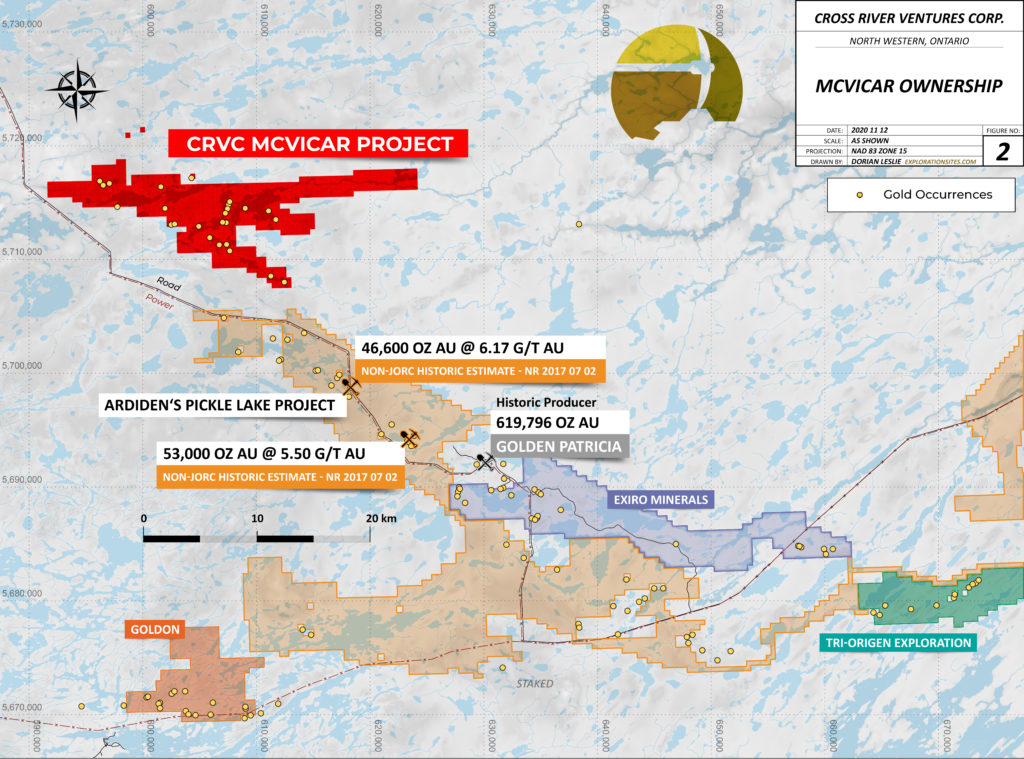
Canadian gold exploration company Cross River Ventures Corp. recently announced updated preparation plans in regards to an upcoming 2022 winter drill program at its 100% owned McVicar Gold Project, located about 150 km east of Red Lake, and 80 km west of Pickle Lake, in NW Ontario, Canada.
The company has multiple gold exploration projects located mainly in NW, Ontario which span across various high gold potential belts, including its largest project, the McVicar Gold Project in the Lang Lake greenstone belt. The project is actually a recent consolidation of multiple properties within the historic Patricia Mining Division. It is over 11,500 hectares and covers all “major fertile structural and geologic elements” of the Lang Lake belt.
The most recent, up to date drilling intercept highlights from McVicar are as follows:
- 6.46 g/t Au over 10.09m (including 29.86 g/t over 1.86m),
- 5.5 g/t Au over 3.6m,
- 11.72 g/t Au over 1.52m,
- 33 g/t Au over 1.86m,
- 5.0 g/t Au over 2.74m, and
- 9.3 g/t Au over 2.02m
Source: Cross River Ventures Corp.
The winter 2022 drilling program includes 5,000 meters of core drilling and will be staged from the Cat Lake Winter Road. The program is fully funded and will prioritize two main targets, The Altered Zone and the Bear Head Zone, which were advanced to the drilling stage due to significant field work in 2021. Exact timing of when the drilling campaign is expected to begin will depend on conditions of the winter road, but camp construction is anticipated to start in February.
In advance of the drilling program commencing, the company also acquired the rest of the “relevant open claim blocks” located on the McVicar project, that are known to cover “historic mineral occurrences with notable gold results.”
These additional mineral claims were acquired from an “arms length vendor” in exchange for the issuance of 100,000 common shares, which are subject to a statutory hold period of four-months-and-one-day following the closing day of issuance.
The following list includes the mineral land occurrences from the additional claim blocks:
- Lang Lake – Belore[iv] 14.12 grams per ton gold and 0.45% copper
- Sample 2056[v] 1.34 grams per ton gold
- Sample 0134[vi] 1.47 grams per ton gold
- AOI 3[vii] 1.18 grams per ton gold
- Sample 2211[viii] 297 grams per ton silver and >1% lead
Source: Cross River Ventures Corp.
The 2022 drilling program is actually the second step in discovering the potential of the two targets at McVicar. In 2021, phase one was launched and the company’s technical team discovered two high-grade gold trends at the two main priority targets, which confirmed the locations of historic bedrock gold occurrences.
Not only were these bedrock gold occurrences discovered, but the discovery of one of the main targets, the Bear Head Zone. The zone is undrilled, with a “minimum 700-meter-long, high-grade gold corridor, nested within a multi-kilometer gold-bearing crustal-scale break.” Bear Head is approximately 600 meters south of the historic Chellow Vein, which is a narrow vein containing white quartz, minor pyrite and visible gold. The location of the Bear Head Zone alone shows the great potential the property has.
The other main target the company is focused on is the Altered Zone, which is a “complex zone of deformation and intense alteration composed of intensely sheard mafic volcanics, abundant green mica, intermediate intrusive rocks, massive to semi-massive quartz, and a quartz-carbonate-sericite schist.” The upcoming drilling program plans to test the gold grade along with new gold shoots and domains at several locations along the zone.
“Shallow historic drilling at the Altered Zone intercepted 6.46 g/t Au over 10.09m (including 33 g/t Au over 1.86m) (drillhole ML-86-27[xii]), 5.7 g/t Au over 7.71m (drillhole ML-03-019), amongst other high-grade results. Trenching of the shear zone approximately 200m north of the claims returned 6.89 g/t Au over 1.55m (trench AZ-03-05; Continuum Resources Ltd.[xiii]).”
Source: Cross River Ventures Corp.
The company received Early Exploration Permits for the McVicar property in June 2021 along with all relevant permits for the drilling program. Cross River also controls four early-stage properties within the Archean Uchi Greenstone Belt, which are Shabu, Dent-Jackson, Maskootch, and Ear Falls from north to south. It is also responsible for the Manitou gold exploration project near the Archean Eagle-Wabigoon-Manitou lakes Greenstone belt approximately 40km south of the community of Dryden, and the Fuchsite Lake project located 20 km north of the town of Armstrong, Ontario.
Cross River is off to an exciting 2022 year with its upcoming drilling program, but also with its new grant of stock options which it announced mid January. The stock option plan will allow various directors, officers and consultants of the company to purchase up to 2,000,000 common shares of the company. “The stock options are subject to a four month hold period, are exercisable at a price of $0.17 per share and expire two years from the January 17, 2022 date of grant,” according to the press release.
The above references an opinion and is for information purposes only. It is not intended to be investment advice. Seek a licensed professional for investment advice. The author is not an insider or shareholder of any of the companies mentioned above.
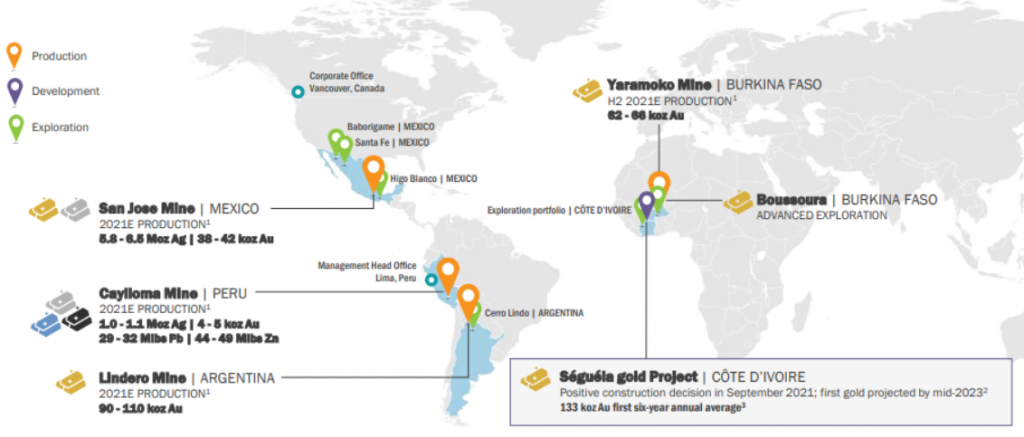
Fortuna Silver’s strong 2021 production and financial results were tainted by permitting issues at the San Jose mine in Oaxaca, Mexico.
Although the San Jose issue was resolved in December, recent political developments in Burkina Faso may mean Fortuna (NYSE:FSM | TSX:FVI) maintains an elevated perceived risk profile into 2022.
Production results and outlook
Fortuna has 4 operating mines in Mexico, Peru, Argentina, and Burkina Faso with a total production of about 306,000 oz Au eq.
Gold production surged 274% last year. This was largely due to the Lindero mine in Argentina, which saw its first gold pour in October 2020 and had a full year of production in 2021 with 104,000 oz. The acquisition of the Yaramoko gold mine in Burkina Faso also added 57,500 oz.
The San Jose mine, among the largest silver mines in Mexico, output over 6.4 million ounces in 2021. The Caylloma Mine in Peru added about 1.1 million ounces as well as lead and zinc production which together accounted for 12% of Q3 sales.
San Jose and Caylloma had AISC of 12.2-14.5 and 19.4-23.0 $/oz Ag eq. respectively. AISC at Lindero and Yaramoko were 1,010-1,190 and 990-1,150 $/oz Au.
A production increase of 7-21% Au eq. is projected for 2022. The Séguéla project in Côte d’Ivoire is expected to start producing in mid-2023 and is forecasted to add 130,000-140,000 oz Au. These assumptions, together with stable precious metal prices, would allow Fortuna to surpass $800M in annual sales within about 2 years.
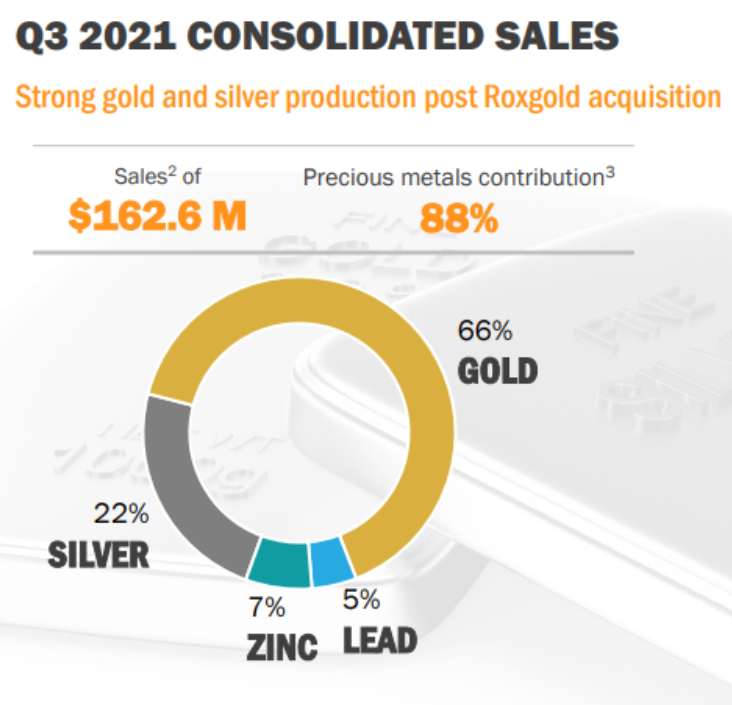
Possible oversell in reaction to San Jose news
Fortuna’s stock had a sharp selloff in Q4 on the prospect that the 10-year environmental permit for the San Jose mine would not be renewed by Mexican regulators.
With San Jose accounting for roughly 20% of revenues, the market had more than priced in a mine shut down by mid-December 2021. Fortuna was down over 40% from Nov. high to Dec. low, while the Global X Silver Miners ETF (NYSEARCA:SIL) was down about 18% over the same period.
Fortuna recovered somewhat since the San Jose permit was granted on Dec. 20, but remains down about 30% since November highs, which is about a 10% average underperformance versus industry peers. It’s possible the market over-discounted for the San Jose risk. Another consideration is recent events in Burkina Faso, which highlight geopolitical risks for West African producers.
West Africa and post-pandemic resource nationalism
A military coup d’etat ousted the president of Burkina Faso on January 24, continuing a wave of coups in the West African region in recent months.
Some commentators have pointed out that, in comparison with the previous generation of coups culminating in the 1990s, there is a heightened discourse of national sovereignty surrounding more recent events. The prospect that this could lead to assertions of national control over natural resources may lead to a chilling effect on investment. The risks include increased royalties and taxes as well as regulations and capital controls.
However, the surge in post-pandemic resource nationalism is countered by the imperative of policymakers to provide stable jobs and boost foreign currency reserves. Headlines may overshadow the extent to which mining is core to regional economies and will continue regardless of political shifts.
As Fortuna CEO Jorge A. Ganoza points out, “West Africa is an established mining jurisdiction. You have all the industry clusters that support the efficient running of the business…. Even though we have geographic dispersion, that dispersion is in areas where you can effectively and efficiently run mines.”
West Africa is, after China, the second-largest gold-producing region in the world. While others may be questioning investments in the region, Fortuna is doubling down on exploration and production. By establishing itself as a reliable partner in economic development with a long-term stakeholder approach, Fortuna could be positioning itself for the years to come.
The above references an opinion and is for information purposes only. It is not intended to be investment advice. Seek a licensed professional for investment advice. The author is not an insider or shareholder of any of the companies mentioned above.
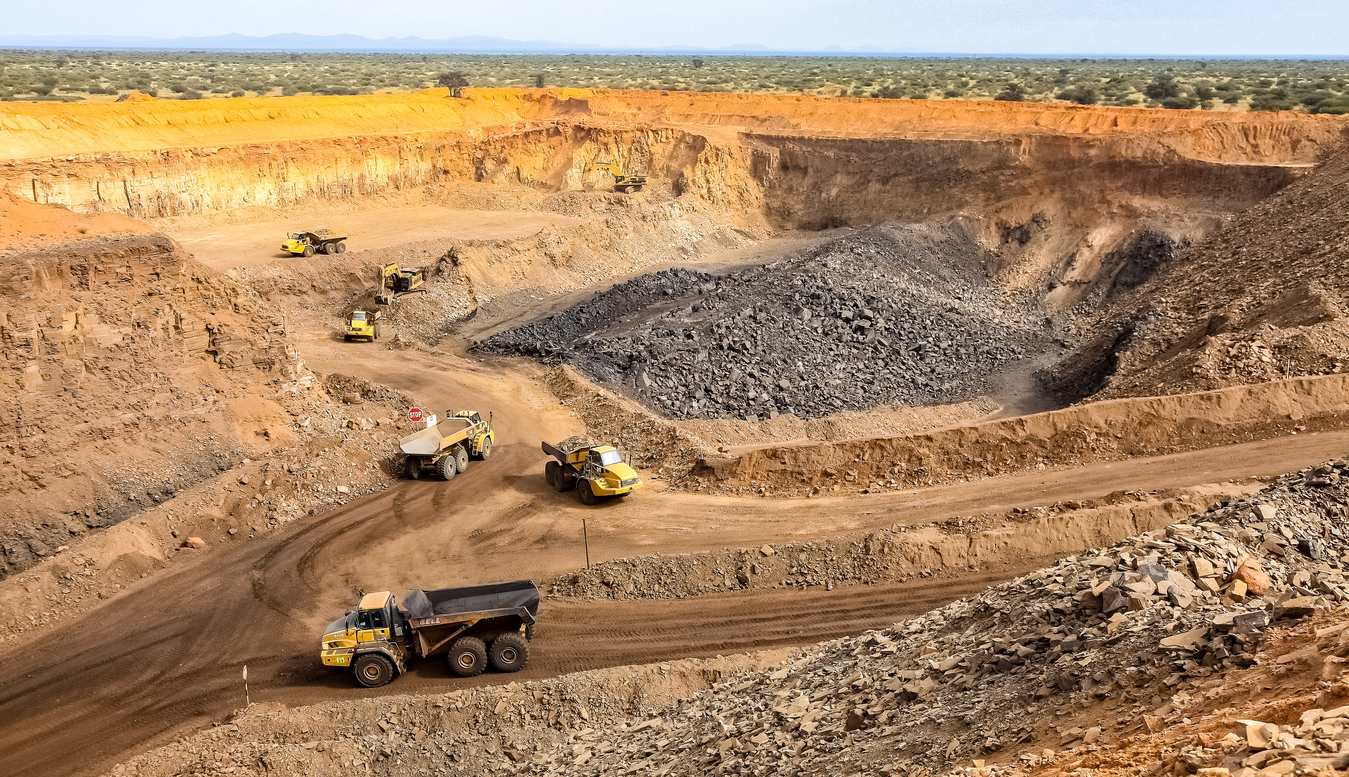
One of West Africa’s leading drilling companies, Geodrill, announced that it has secured a major five-year drilling contract with Centamin (LSE:CEY) for its Sukari mine. The Toronto-based drilling and exploration company reported that the contract is for a minimum of 90,000 meters of subway exploration and grade control drilling per year using five drill rigs.
Dave Harper, Geodrill’s president and chief executive officer, said, “The award of this contract to Geodrill is a testament to our operating performance, reputation for excellence and is in line with our strategy to focus on long-term contracts with blue chip clients in new geographic regions that drive future growth of our business.”
Sukari
The Sukari mine is a low-cost bulk tonnage open pit high-grade subway bulk tonnage gold mining operation located in Egypt. Centamin considers Sukari to be the largest and most important gold mine in the country as well as the company’s core asset.
Sukari produced its first gold ingot in 2009, which was a critical event in Centamin’s history and in the modern Egyptian mining industry. To date, the mine has produced over 4 Moz of gold representing US $1 billion of cash flow.
The company expects revenues in excess of US $54 million to be generated from the contract over the life of the contract as well as expanding its operating footprint into a new geographic region.
“Our business with Centamin not only complements our existing work, but will also help us counter cyclical industry downturns while providing a significant and stable long-term revenue base over the next 5 years.” added Harper.
Centamin is also working to advance its Doropo project located in northwestern Côte d’Ivoire, which consists of seven exploration permits covering an area of approximately 1,850 km2. The company commenced exploration of the Doropo project in late 2015, reaching a mineral resource estimate of 5M oz in 2021.
Centamin’s African Portfolio
Centamin is the mining company whose principal asset is the Sukari gold mine, a long-life underground and open pit bulk tonnage operation. It is considered one of the largest producing mines in the world with a planned production of over 400,000 ounces per year with a mine life of 12 years. The company recognizes its responsibility not only to deliver operational and financial performance, but also to create a lasting benefit for the company and its shareholders through good corporate citizenship. Centamin has existing operations in Egypt, Burkina Faso and Côte d’Ivoire and an active portfolio of future growth prospects. Its assets include the Sukari mine, the Doropo Project, the Batie West Project and the ABC Project, with Sulkari being its capital focus while steadily unlocking value from its highly prospective West African land package.
The above references an opinion and is for information purposes only. It is not intended to be investment advice. Seek a licensed professional for investment advice. The author is not an insider or shareholder of any of the companies mentioned above.
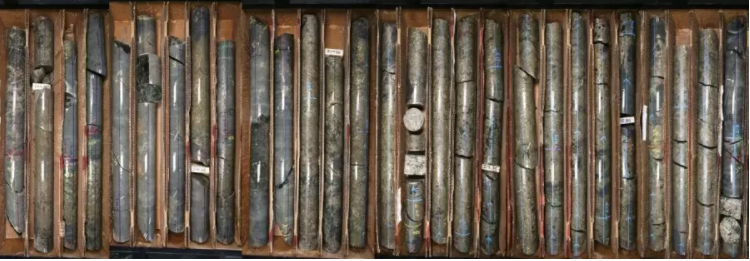
Figure 1: 15.08 meters of mixed and massive sulphide nickel and copper mineralization in 21TK0355 beginning at 202.86 meters depth
Talon Metals Corp. reported that its Minnesota-based Tamarack Nickel-Copper-Cobalt Project is expanding. The company reported 31 new drill holes are located in the CGO West area, approximately 100 meters north-northwest of the Tamarack Nickel Project resource area. The new holes have intercepted nickel-copper mineralization, with assays pending.
Additional significant drill core intervals reported today (with assays pending) are as follows:
- Drill hole 21TK0348 intercepted 13.77 meters of mixed and massive nickel and copper mineralization, beginning at 250.24 meters depth;
- Drill hole 21TK0350 intercepted 13.25 meters of mixed and massive nickel and copper mineralization, beginning at 245.69 meters depth;
- Drill hole 21TK0354 intercepted 4.22 meters of mixed and massive nickel and copper mineralization, beginning at 198.53 meters depth;
- Drill hole 21TK0357 intercepted 3.9 meters of mixed and massive nickel and copper mineralization, beginning at 172.44 meters depth;
- Drill hole 21TK0360 intercepted 14.05 meters of mixed and massive nickel and copper mineralization, beginning at 242.09 meters depth; and
- Drill hole 21TK0368 intercepted 4.53 meters of mixed and massive nickel and copper mineralization, beginning at 188.6 meters depth.
Source: Talon Metals
Notably, drill hole 21TK0355 intercepted 15.08 meters of mixed and massive nickel-copper mineralization starting at only 202.86 meters depth. With the intercept being deeper than the previously reported large layer of nickel and copper mineralization in the immediate vicinity, it is suspected that another layer of massive mineralization may be present at this location. Investigations of this location will continue in 2022.
The layer of nickel and copper mineralization lies within the CGO West area, to the southwest and at depth so drilling in 2022 will focus on this area.
Talon Metals CEO. Henri van Rooyen, said, “Our in-house geology, geophysics and geotechnical teams are going from strength to strength with the drilling program at the Tamarack Nickel Project. While maintaining a zealous focus on safety in a prolonged pandemic, the team is still able to deploy rigs in the right places, set records for meters drilled per day and significantly increase our understanding of the CGO West area.”
Dr. Etienne Dinel, Talon’s Vice President of Geology, has confirmed that the analytical and test procedures used are industry standard operating procedures and methodologies and has reviewed, approved and verified the technical information disclosed, including the sampling, analytical and test data underlying the technical information.
Figure 2: Plan view geological map of the northern portion of the Tamarack Nickel Project showing drill hole locations with nickel-copper mineralization intervals in the CGO West area

Figure 3: Section A represents a portion of the CGO West area looking east showing the thick intersections of nickel-copper mineralization

Figure 4: Section B represents a portion of the CGO West area looking east showing the thick intersections of nickel-copper mineralization
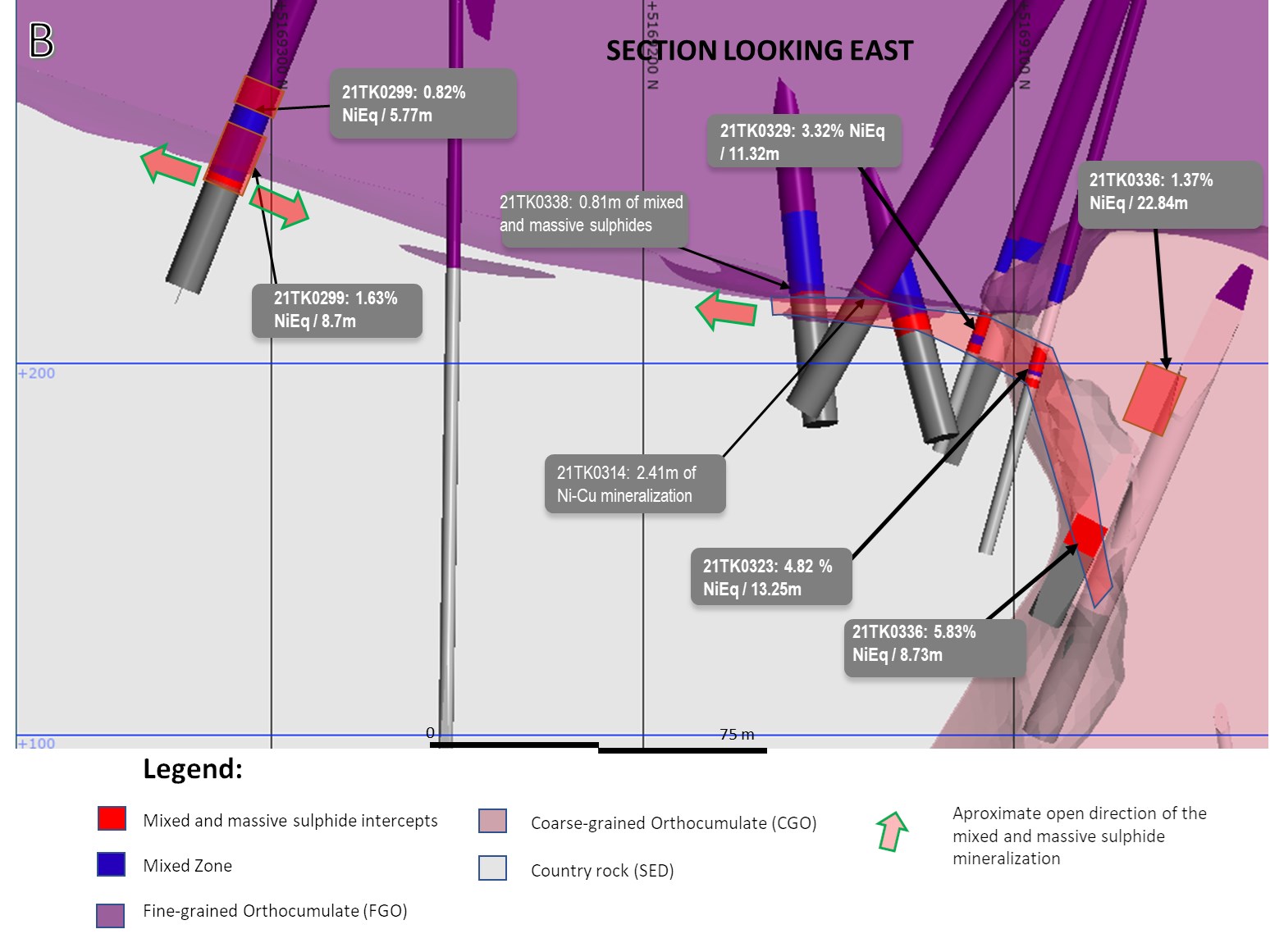
Talon Metals on a High-Grade Nickel Mission
Talon is a TSX-listed base metals company in a joint venture with Rio Tinto on the high-grade Tamarack Nickel-Copper-Cobalt Project located in central Minnesota. Talon is focused on expanding its current resource of high-grade nickel mineralization prepared in accordance with NI 43-101; identifying additional high-grade nickel mineralization; and developing responsible processing capacity in the United States.
Talon’s Tesla (NASDAQ:TSLA) Deal
Talon recently entered into an agreement with Tesla Inc (Tesla) for the supply and purchase of nickel concentrate to be produced at the Tamarack Nickel Project. The deal will be execute following a due-diligence period performed by Tesla and negotiations.
Highlights of the agreement include:
- Tesla has committed to purchase 75,000 metric tonnes (165 million lbs) of nickel in concentrate, representing a portion of the metals projected to be produced from the Tamarack Nickel Project. Tesla also has a preferential right under the agreement to negotiate the purchase of additional nickel concentrate over and above the initial 75,000 metric tonne commitment.
- The term of the agreement is six years or until a total of 75,000 metric tonnes of nickel in concentrate has been produced and delivered to Tesla.
- The agreement is conditional upon: (i) Talon earning a 60% interest in the Tamarack Nickel Project; (ii) Talon commencing commercial production at the Tamarack Nickel Project; and (iii) the parties completing negotiations and executing detailed supply terms and conditions.
- Talon will use commercially reasonable efforts to achieve commercial production on or before 1 January 2026 at the Tamarack Nickel Project, which may be extended by the agreement of the parties for up to 12 months following which Tesla has a right to terminate the agreement and Talon may elect to sell to other parties.
- Talon and Tesla will work together to optimize nickel concentrate grades and metal recoveries.
- The purchase price to be paid by Tesla for the nickel in concentrate will be linked to the London Metals Exchange (LME) official cash settlement price for nickel. The parties have also agreed to share in any additional economics derived from by-products extracted from the nickel concentrate, such as iron and cobalt.
Source: Green Car Congress
The above references an opinion and is for information purposes only. It is not intended to be investment advice. Seek a licensed professional for investment advice. The author is not an insider or shareholder of any of the companies mentioned above.
If you would like to receive our free newsletter via email, simply enter your email address below & click subscribe.
CONNECT WITH US
Tweets
Tweet with hash tag #miningfeeds or @miningfeeds and your tweets will be displayed across this site.
MOST ACTIVE MINING STOCKS
Daily Gainers
 Lincoln Minerals Limited Lincoln Minerals Limited |
LML.AX | +125.00% |
      |
GCR.AX | +33.33% |
      |
CASA.V | +30.00% |
      |
AHN.AX | +22.22% |
      |
ADD.AX | +22.22% |
      |
AZM.V | +21.98% |
      |
NSE.V | +21.05% |
      |
DYG.V | +18.42% |
      |
AAZ.V | +18.18% |
      |
GLA.AX | +17.65% |

 Follow us on Twitter
Follow us on Twitter Become our facebook fan
Become our facebook fan








